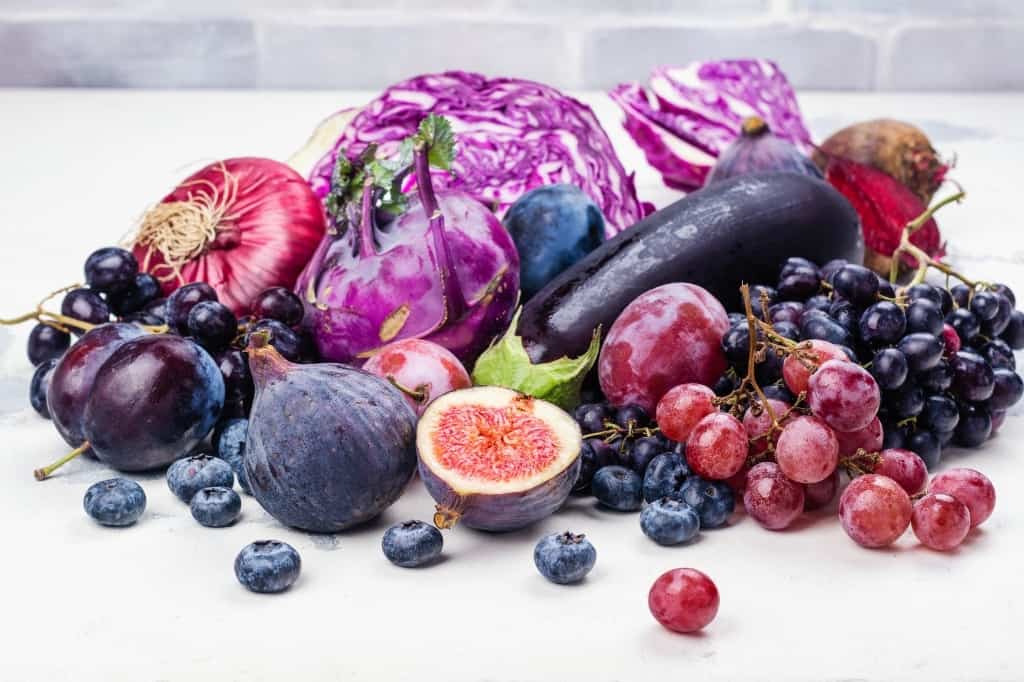Are you searching for naturally purple things? We have compiled a comprehensive list of purple things in this article!
Purple is associated with the supernatural and mystery. That is why we are drawn to this color and want to learn more about it.
Furthermore, purple fruits and vegetables are rich in powerful antioxidants beneficial for optimal body function. These are called anthocyanins.
What is associated aith purple?
Purple is associated with royalty, nobility, luxury, and power. In addition, it has meanings related to spirituality and mystery. Purple also represents creativity, wisdom, wealth, extravagance, and magic.
Purple has been worn by kings and queens since ancient times and has rich symbolism.
It is a color of imagination that promotes self-awareness.
In the RGB color model, purple is a combination of blue and red.
List of things that are purple
Here’s a list of things, animals, plants, and foods that are naturally purple.
Purple Things
Amethyst
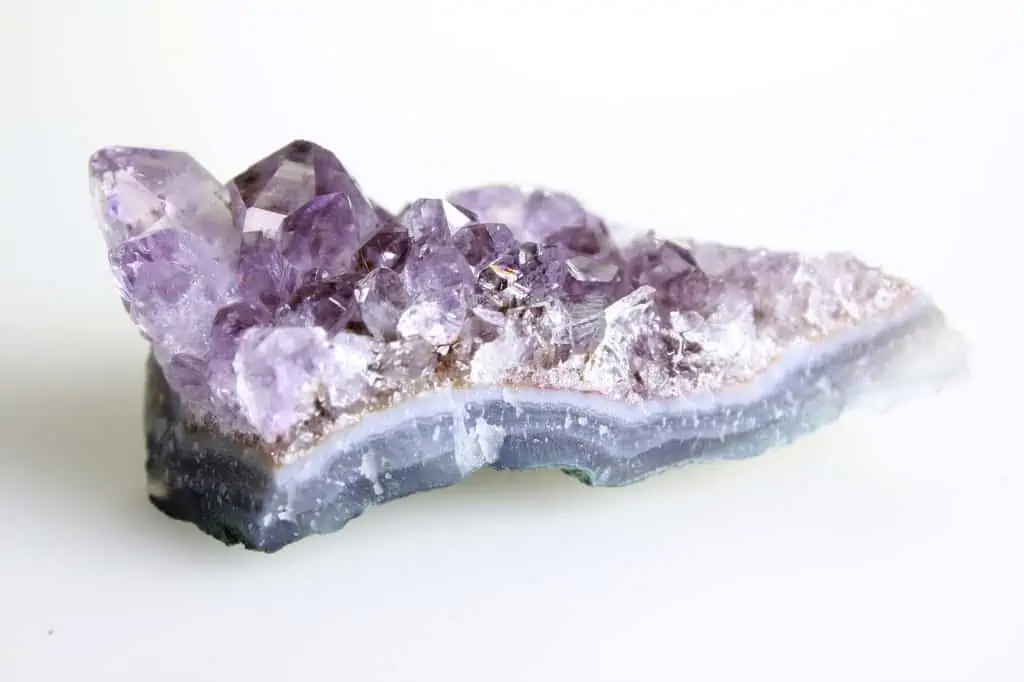
Amethyst: A purple-colored variety of quartz. Irradiation, iron impurities, and other trace elements contribute to the purple hue. It is said to help manage fears, anger, and anxiety. Each carat costs between $20 and $40.
Purple Marble
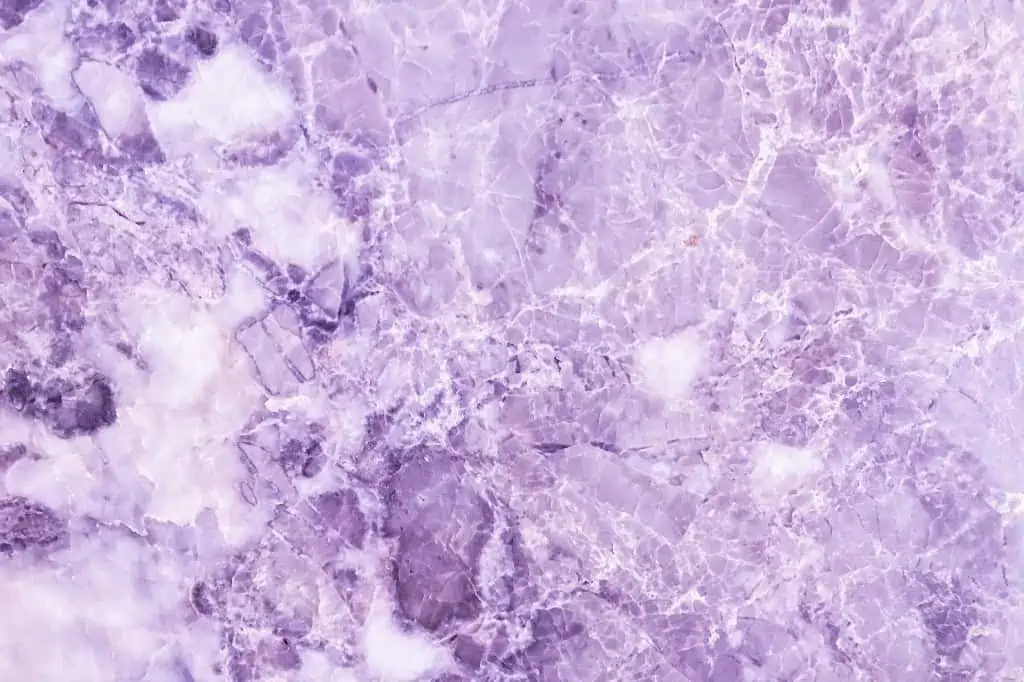
Purple Marble: Purple marble is a sedimentary rock of thermal origin that formed as a result of limestone metamorphism. It is naturally purple and stands out for its vibrant color.
Galaxies

Galaxies: Galaxies are vast collections of gas, dust, billions of stars, and their solar systems that appear blue and purple in color.
Purple Diamond
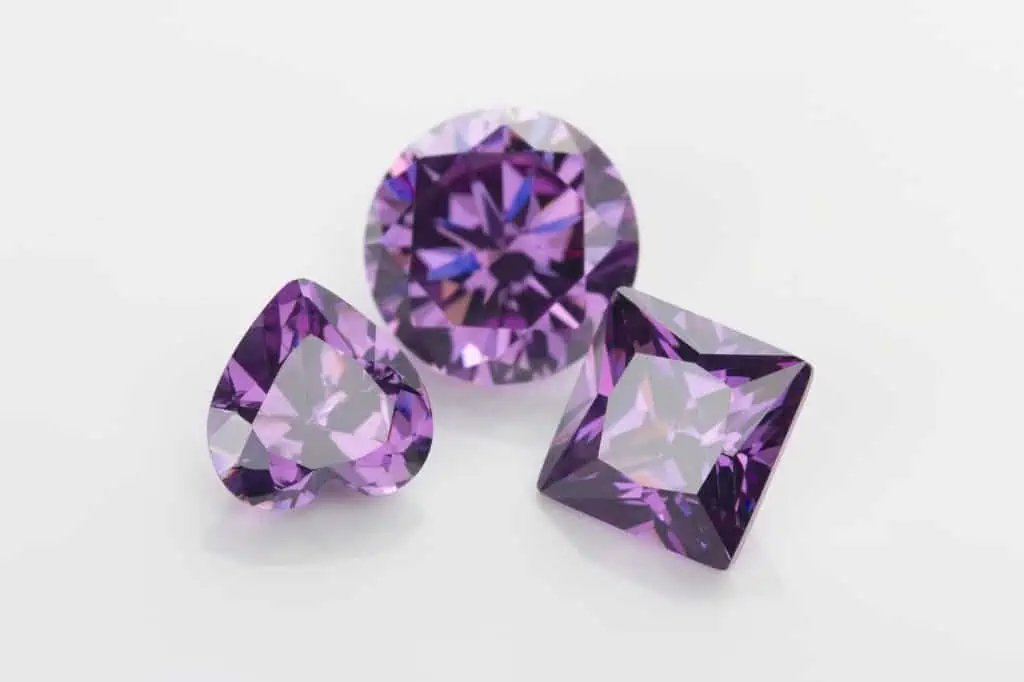
Purple Diamond: Rare and expensive, purple diamonds are quite uncommon. Natural purple diamonds do exist. They are known by various names such as Lavender, Lilac, Orchid, and Plum diamonds. They are the most expensive purple things on the planet.
Charoite
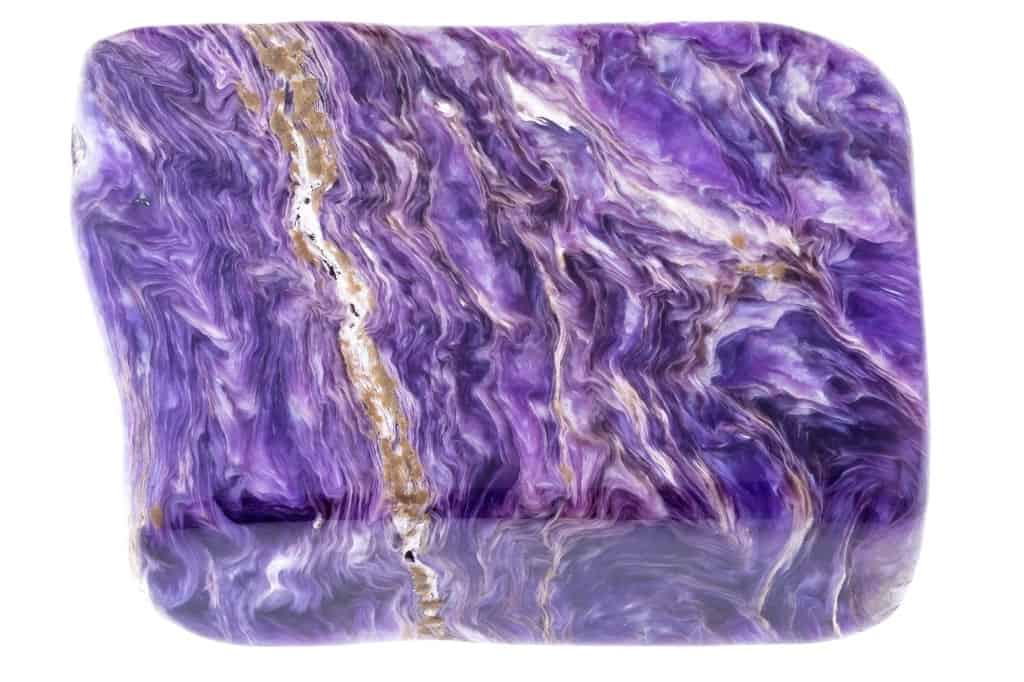
Charoite: It’s a vivid purple silicate mineral that can only be found in Siberia (Russia). It is popular among healers because it is said to help transform negative emotions into positive ones.
Purple Ametrine
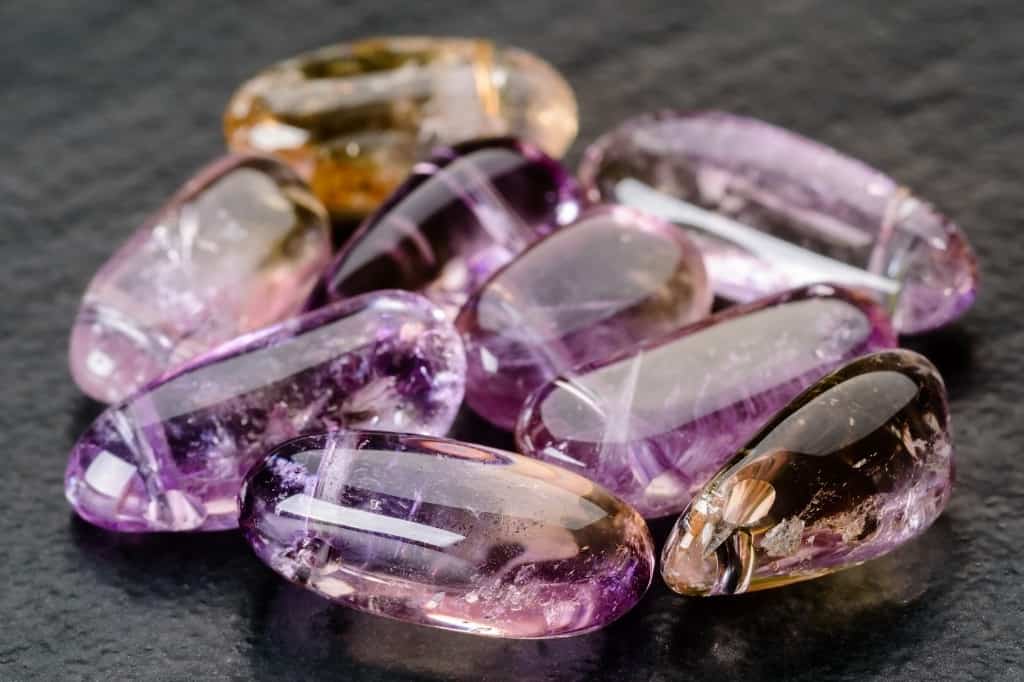
Purple Ametrine: Also known as Trystine, ametrine is a type of quartz that is a crystalline mix of citrine and amethyst with purple and yellow hues. It is said to help relieve stress and calm the mind.
Lepidolite
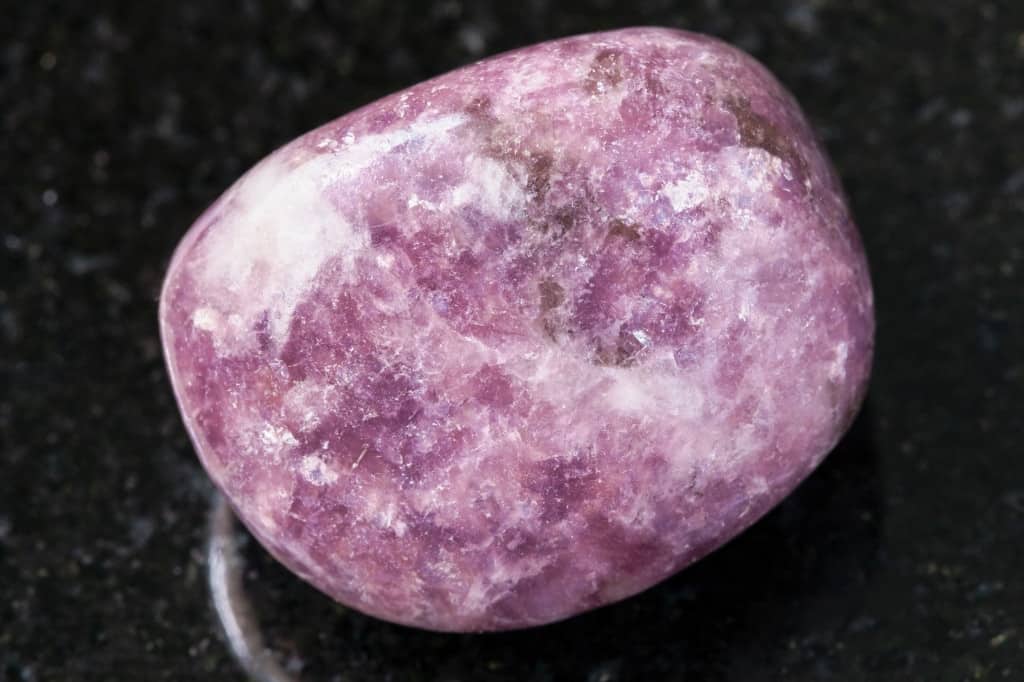
Lepidolite: A purple, pink, or red lithium-rich mineral. When it is impregnated with quartz, it is considered a minor gemstone.
Sugilite
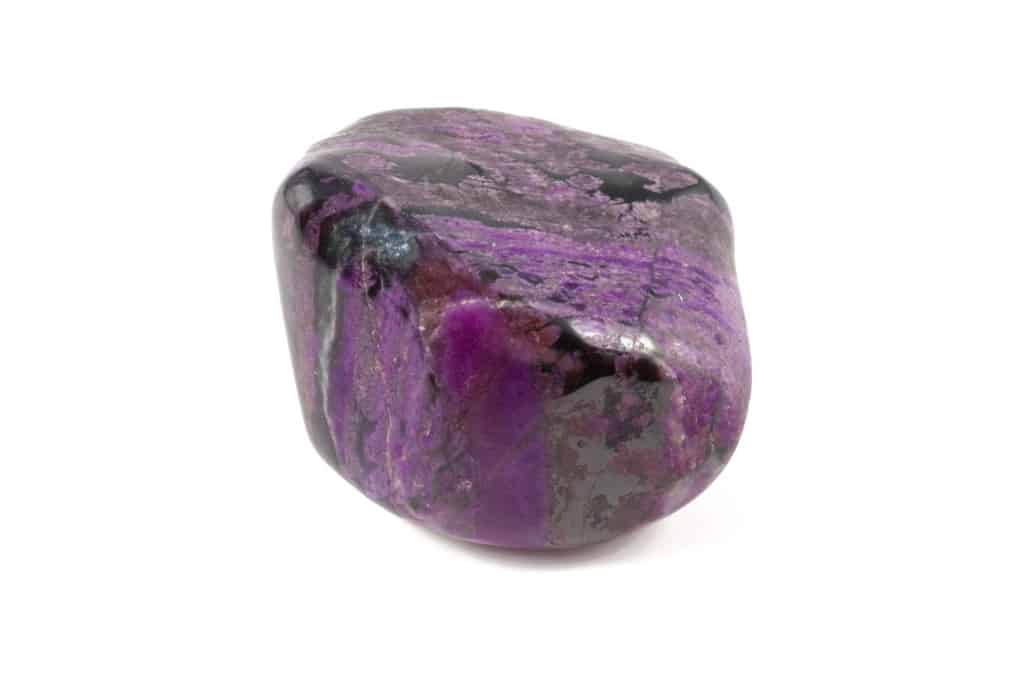
Sugilite: A rare cyclosilicate mineral, sugilite is a mixture of amethyst and garnet and comes in two colors: vibrant purple and pink.
Purple Plants
Purple Rhododendron
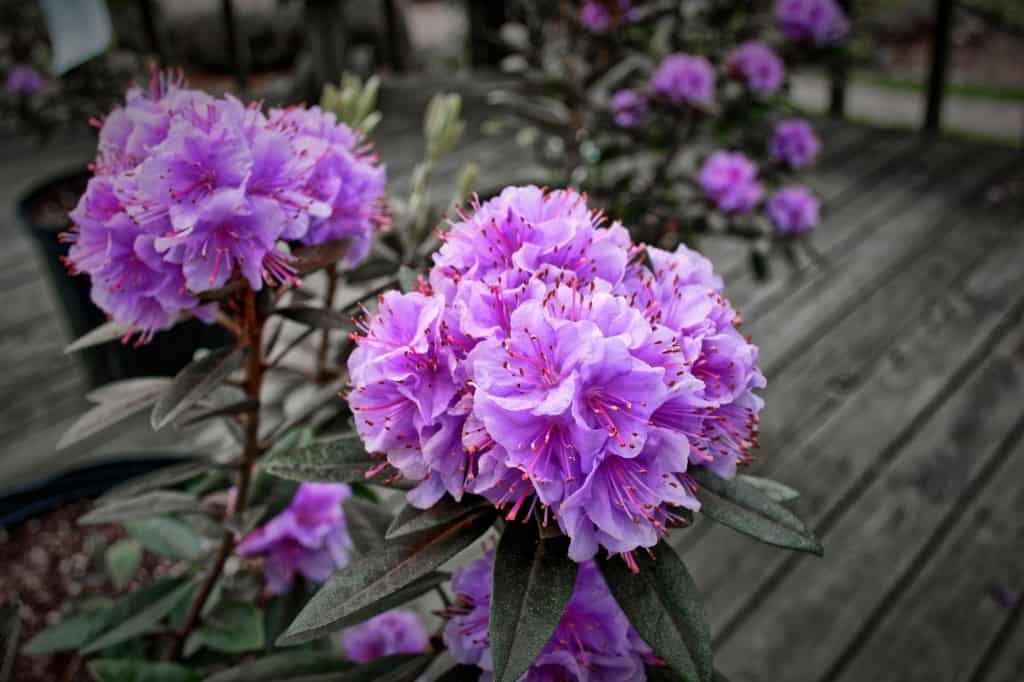
Purple Rhododendron: Rhododendron, a compact shrub prized for its deep purple hues, blooms in late May and produces large trusses of purple flowers.
Lilac
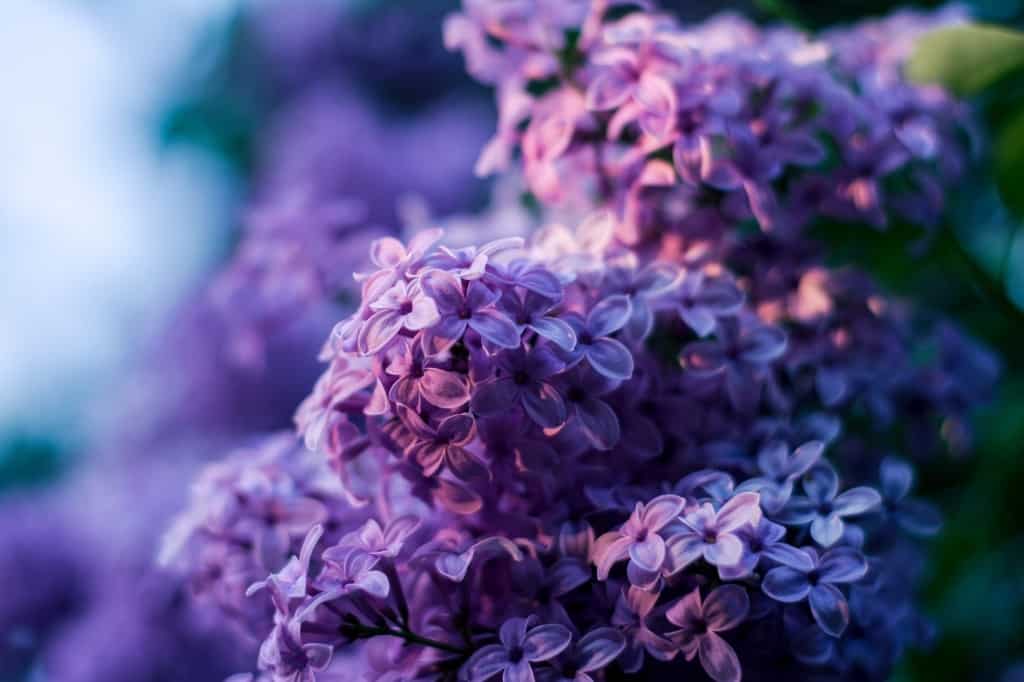
Lilac: A flowering plant native to the Balkan Peninsula, the lilac is a multi-stemmed shrub with stunning purple flowers and a rose-like scent. It is used in aromatherapy and has a variety of therapeutic properties.
Lavender

Lavender: Lavender is a fragrant medium purple or pinkish-purple plant. It is said to help with stress and chronic pain relief. It can also help with sleep. It is native to the Mediterranean region.
Violet
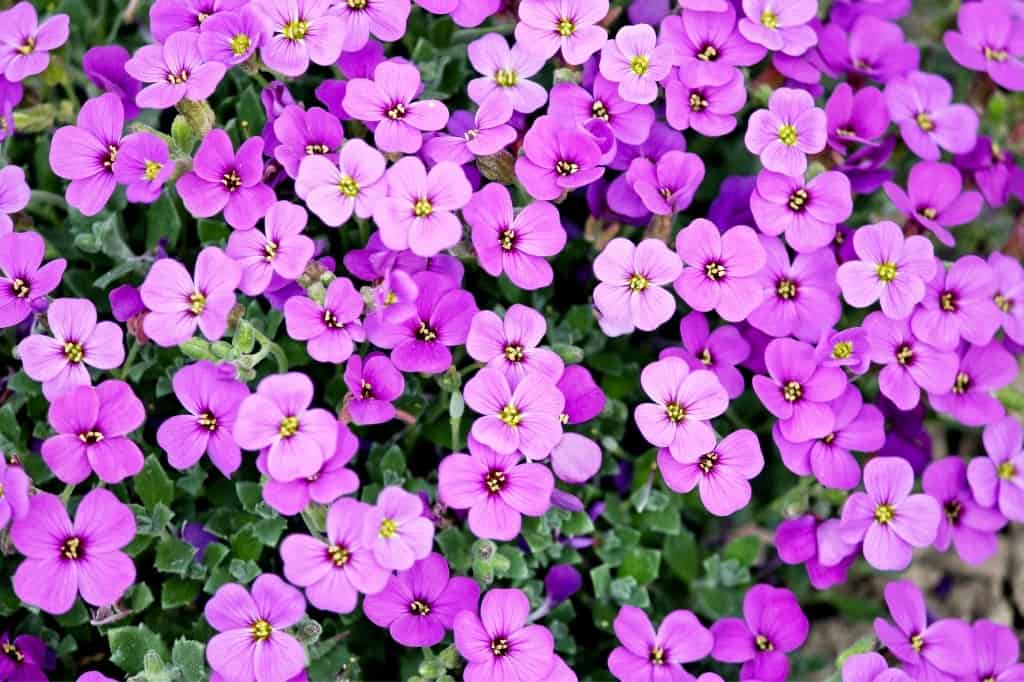
Violet: It is a cheerful flower and one of the first to bloom. It is frequently associated with purity, spirituality, and serenity. It is one of the rainbow colors that is very close to purple.
Tulip
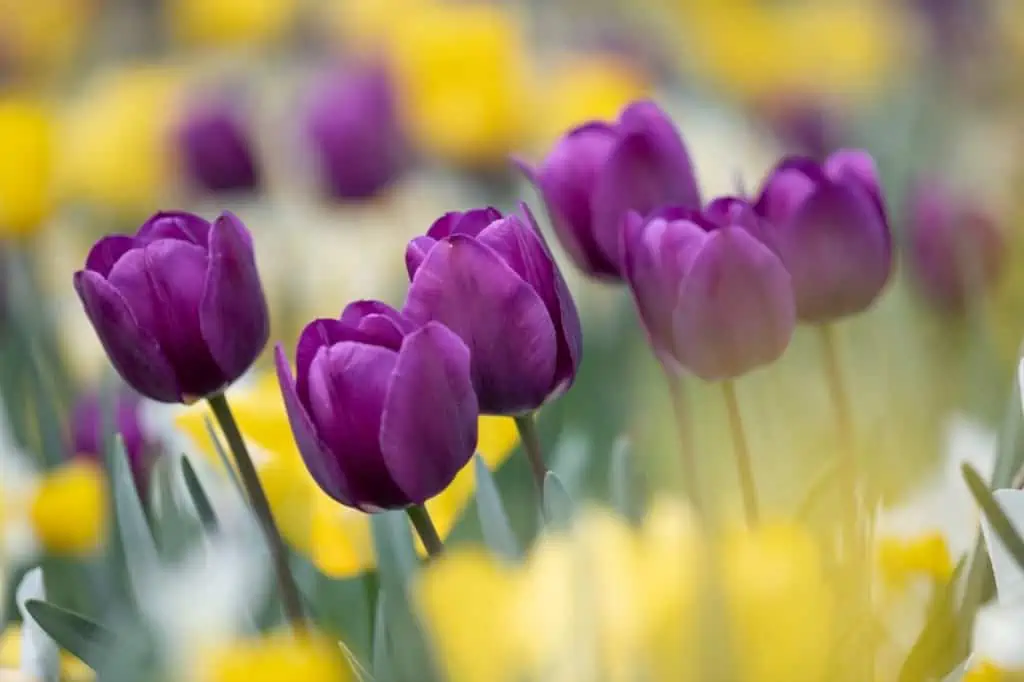
Tulip: This beautiful purple flower is a royal symbol. It is one of the most beautiful tulip colors. It blooms in mid-spring and has a deep purple color.
It is also available in white, cream, yellow, maroon, and black, in addition to purple.
Jacaranda
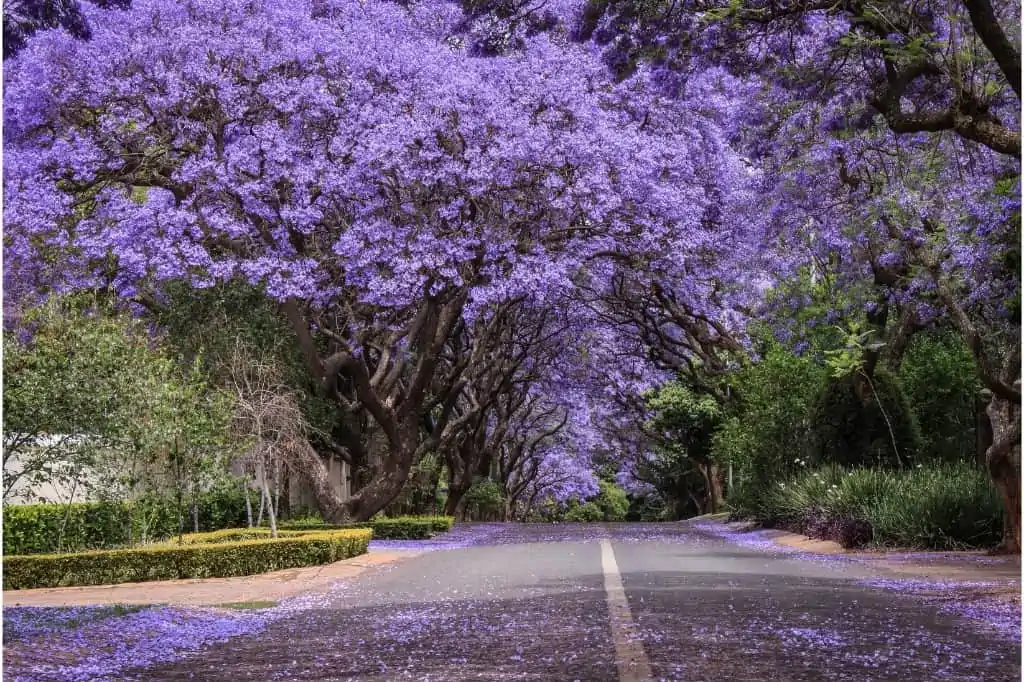
Jacaranda: A subtropical tree native to South America (Brazil and Argentina), jacaranda is widely grown for the beauty of its purple flowers. It is one of nature’s most beautiful purple things.
Orchid
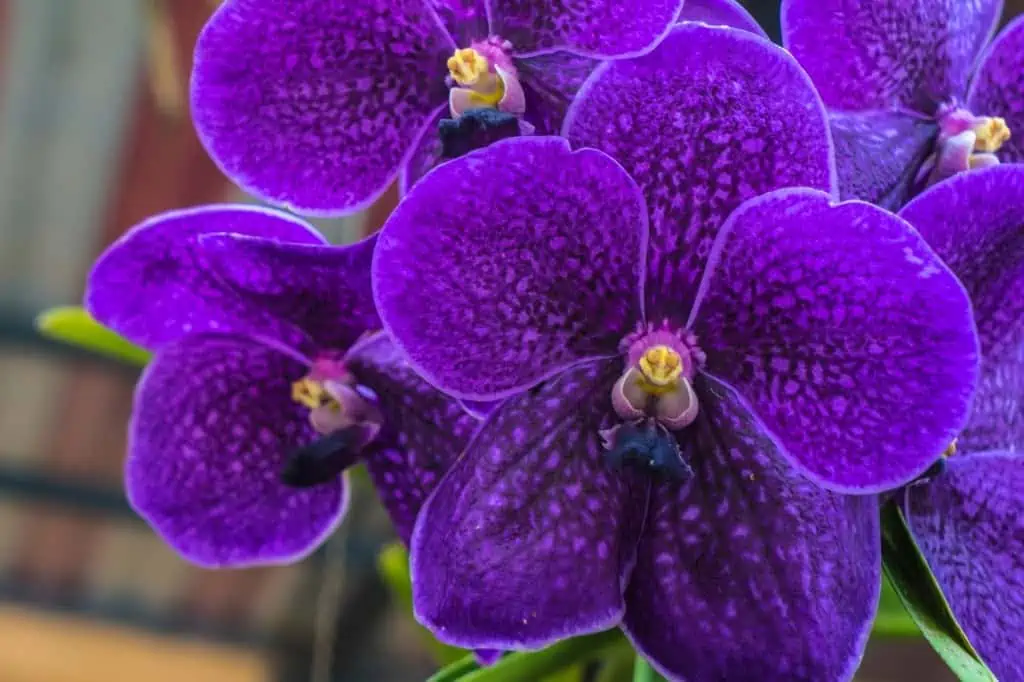
Orchid: A symbol of adoration and respect, orchids are members of the Orchidaceae family and have a wonderful scent. They come in various colors, including purple.
Bellflower Campanula
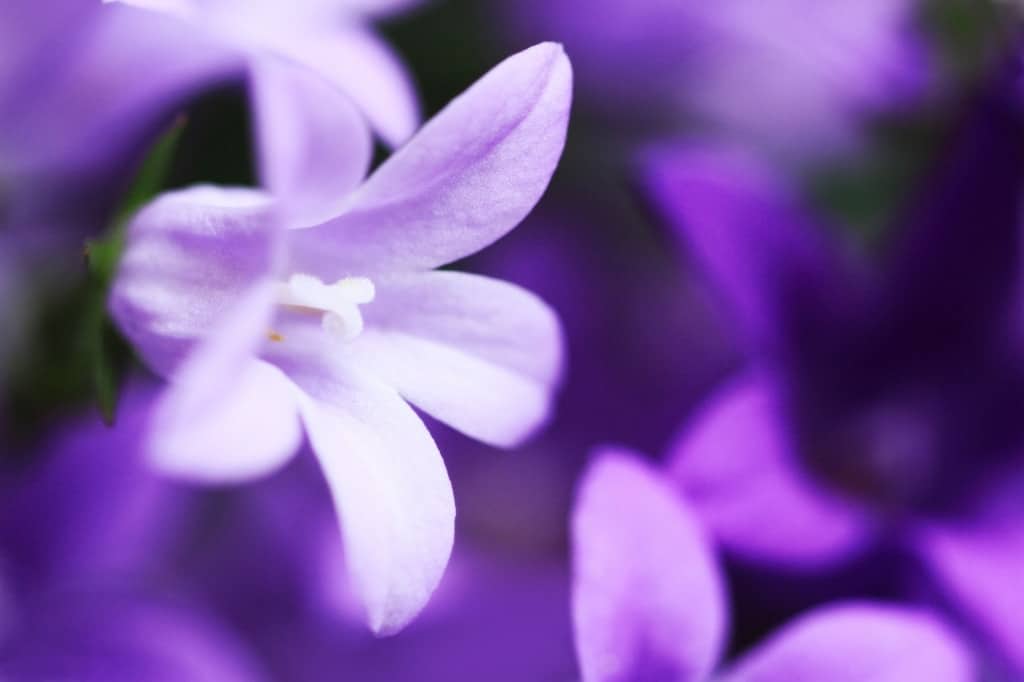
Bellflower Campanula: This biennial plant produces rich purple-purple flowers beginning in its second year. They are best suited to climates with cool summers.
Hyacinth
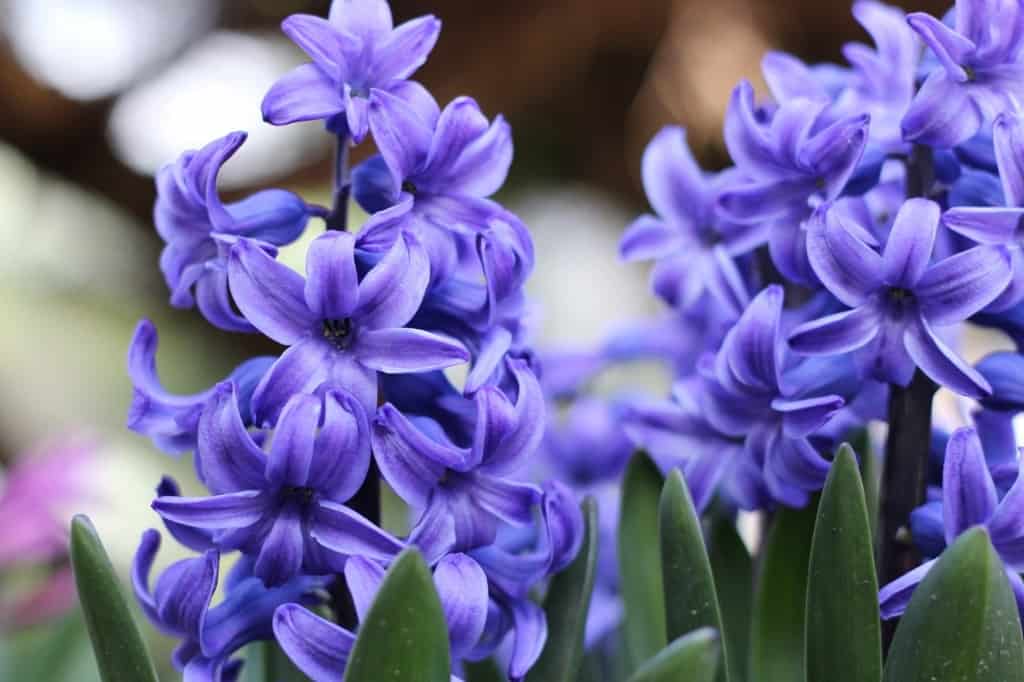
Hyacinth: This fragrant flowering perennial comes in a variety of colors, with purple being one of the most vibrant.
Lupine
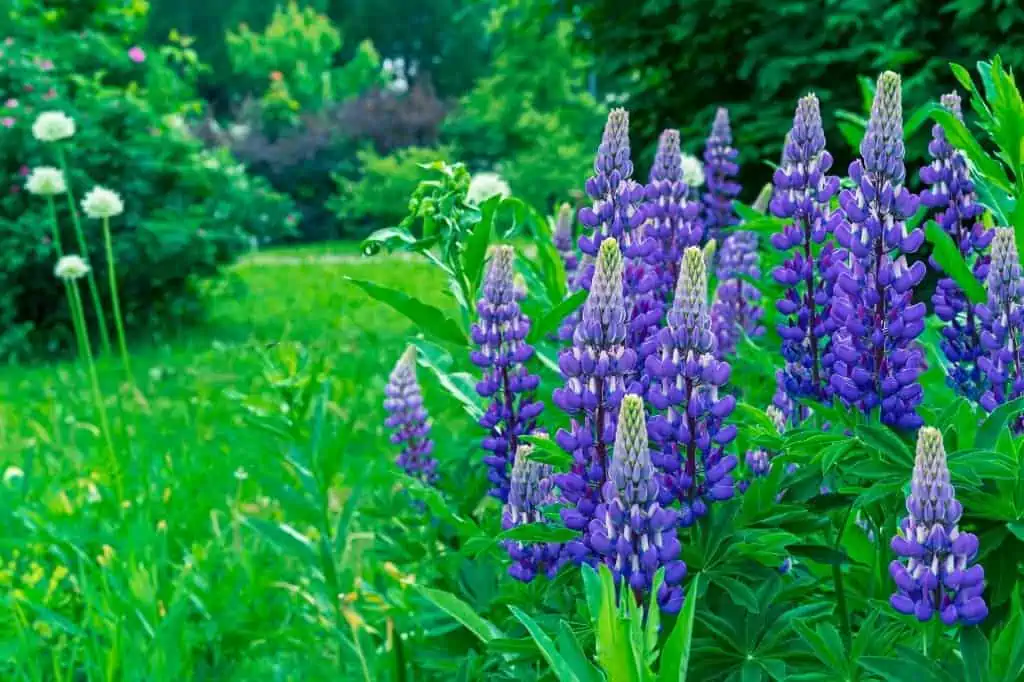
Lupine: Lupine is a beautiful purple perennial with tall purple flowers. The lupine extract is used to stimulate collagen and elastin production in the body.
Petunia
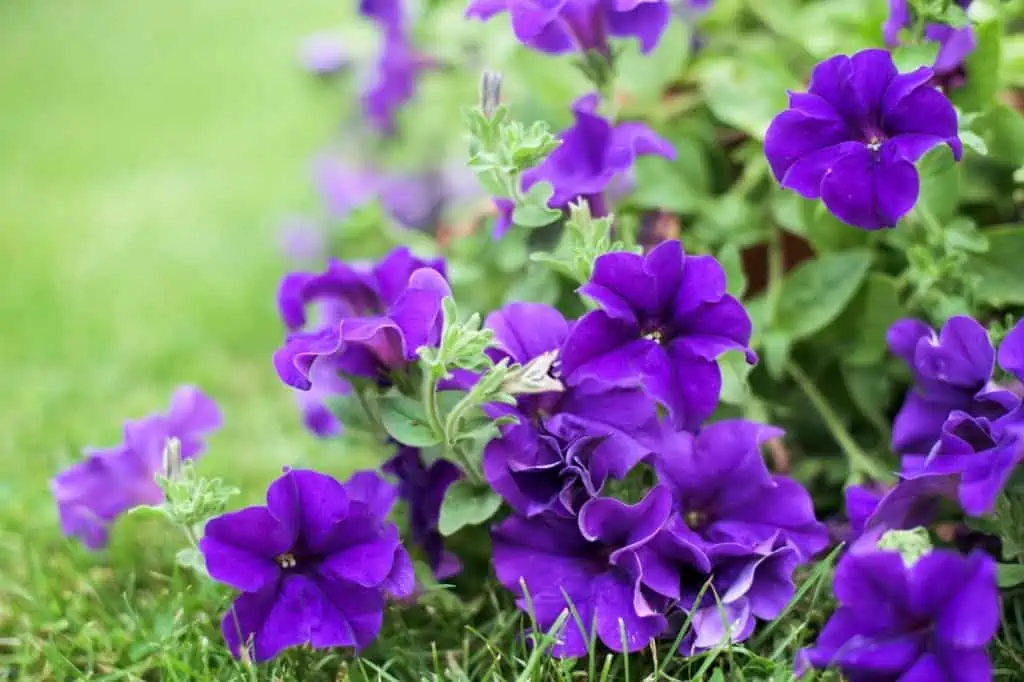
Petunia: Petunias are cascading flowers with a deep purple color that are among the most spectacular garden flowers.
They represent fantasy and grace. They are also available in other colors.
Pansy
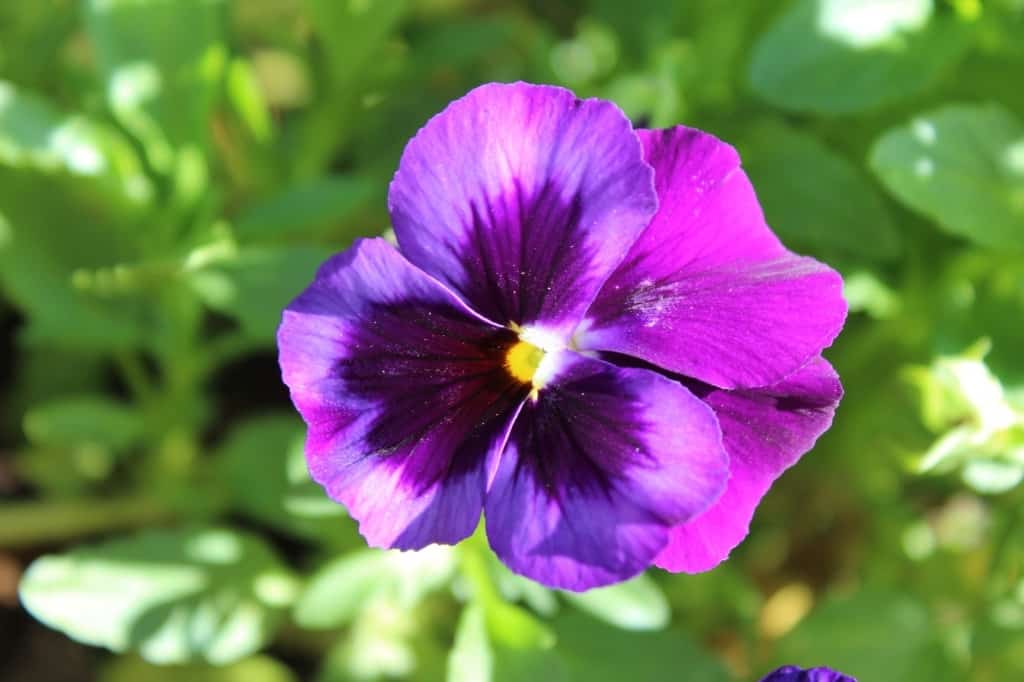
Pansy: A large-flowered hybrid plant, pansy flowers come in various colors, with purple being the most striking due to the yellow in the center of the flower.
The purple color of the pansy flowers represents platonic love.
Purple Zinnia
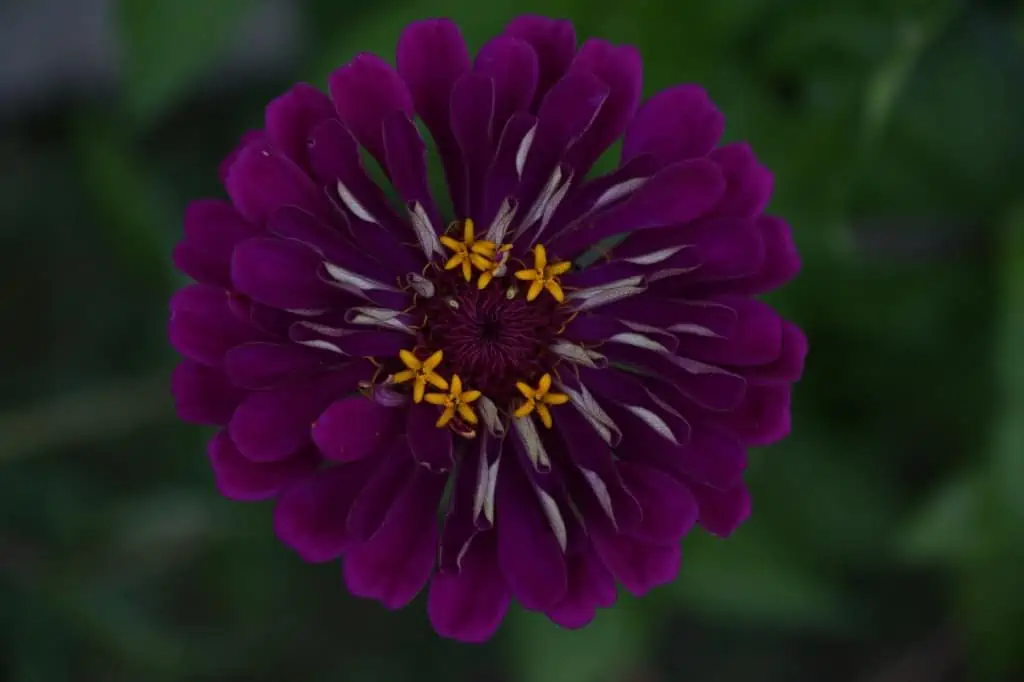
Purple Zinnia: This plant, native to the southwestern United States and South America, has vibrant flowers in various colors. Purple Zinnia is one of the most vibrant of all types.
Anemones
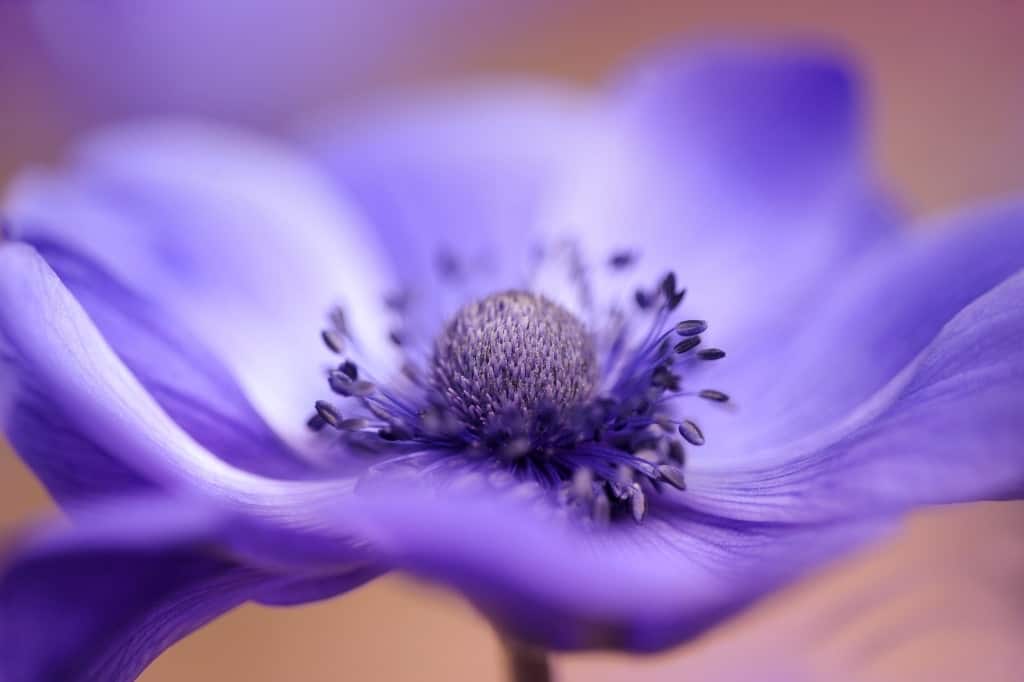
Anemones: These delicate, multicolored flowers bloom in the spring in cool, temperate climates. Purple anemones are lilac in color.
According to legend, anemones represent Aphrodite’s tears.
Cortinarius Violaceus
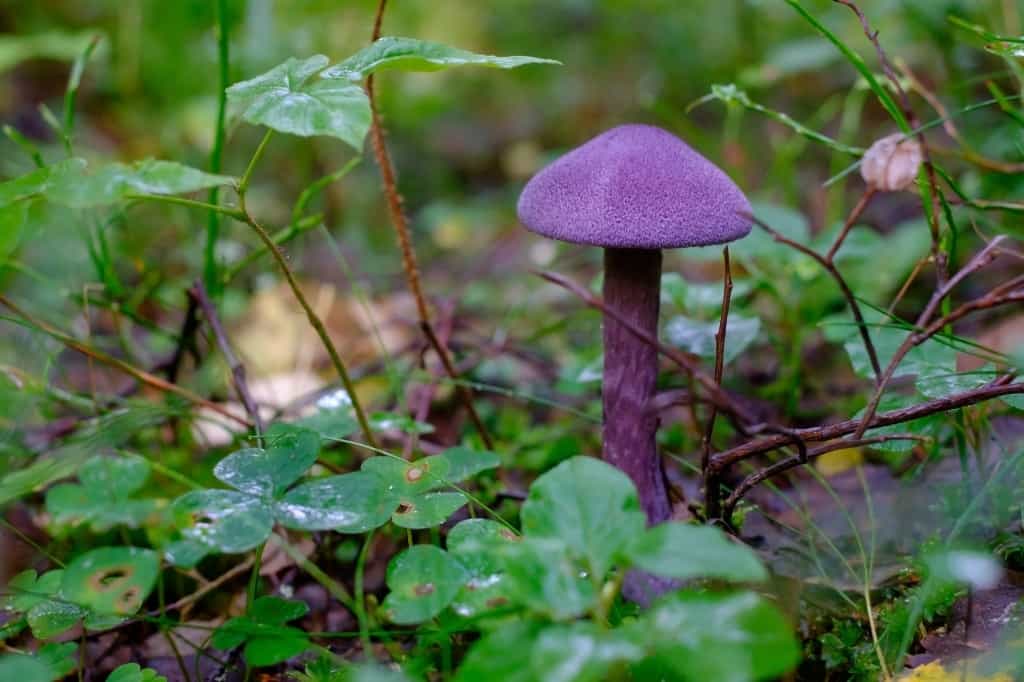
Cortinarius Violaceus: Also known as purple webcap, this mushroom is edible. Cortinarius Violaceus, a Northern Hemisphere native, is one of the few purple mushrooms.
Lisianthus

Lisianthus: This delicate plant native to North American prairies comes in various bright colors, including purple, pink, blue, and white.
The vibrant purple captures the enchantment of lisianthus flowers.
Summer Lilac
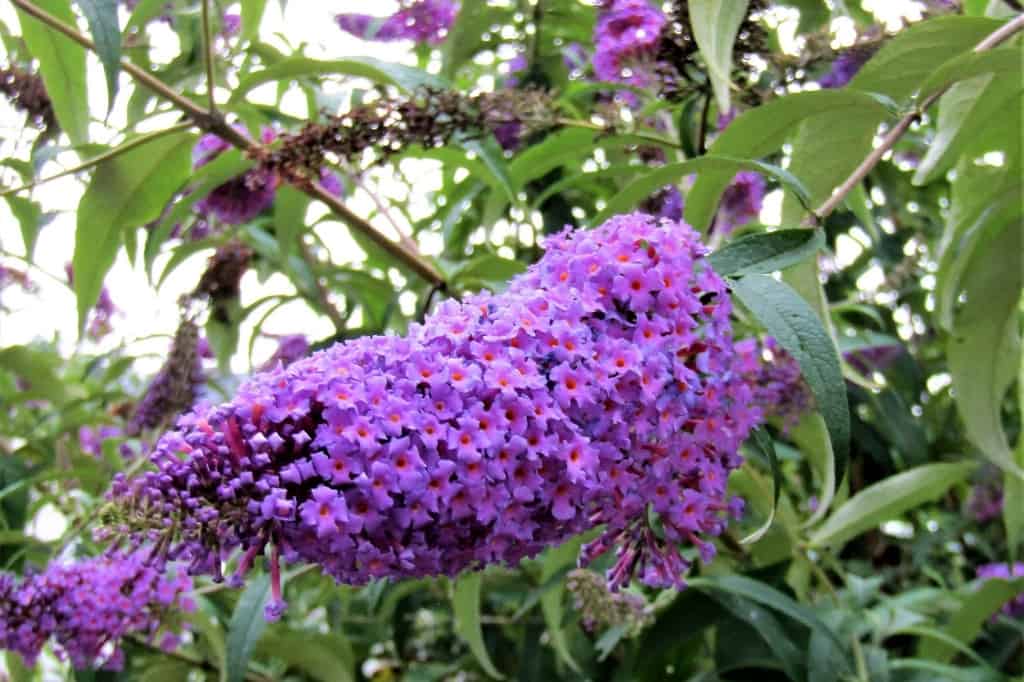
Summer Lilac: This fast-growing shrub is prized for its cone-shaped lilac, red, and white flower clusters. Lilac is a pale purple color named after this flower.
Purple Basil
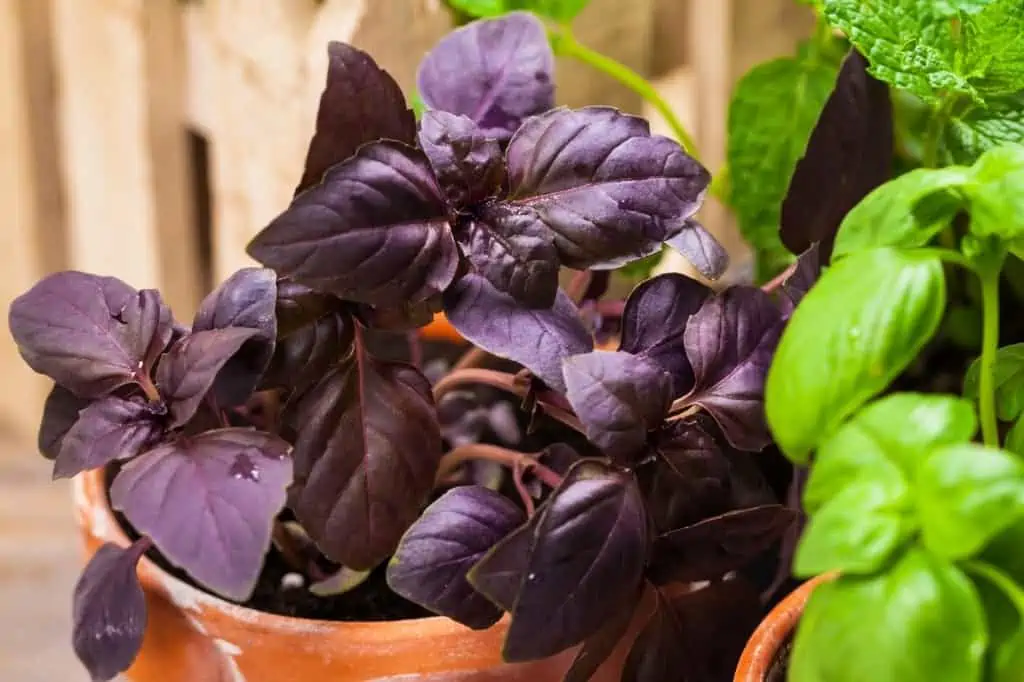
Purple Basil: The dark purple leaves of this plant are used as a garnish or in pesto. Purple basil, scientifically known as Ocimum basilicum, is native to Africa’s tropics.
The presence of anthocyanins, a natural pigment, contributes to the purple color.
Fuchsia

Fuchsia: A flowering, decorative plant native to South America, fuschia has fragrant pinkish-purplish flowers. The existence of this lovely flower gave rise to the color fuschia, a mix of pink and purple.
Ornamental Cabbage
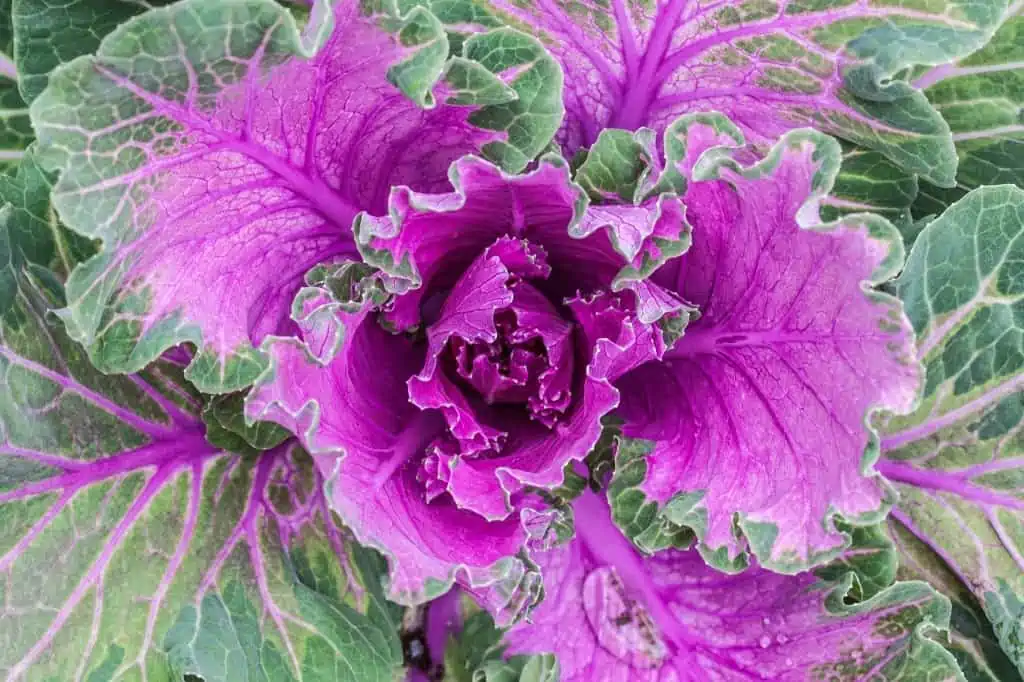
Ornamental Cabbage: Also known as flowering cabbage, ornamental cabbage has wavy edges that are bright pink or purple.
Purple ornamental cabbage is edible and can be used in salads or as a garnish.
Purple Foods
Purple Carrots
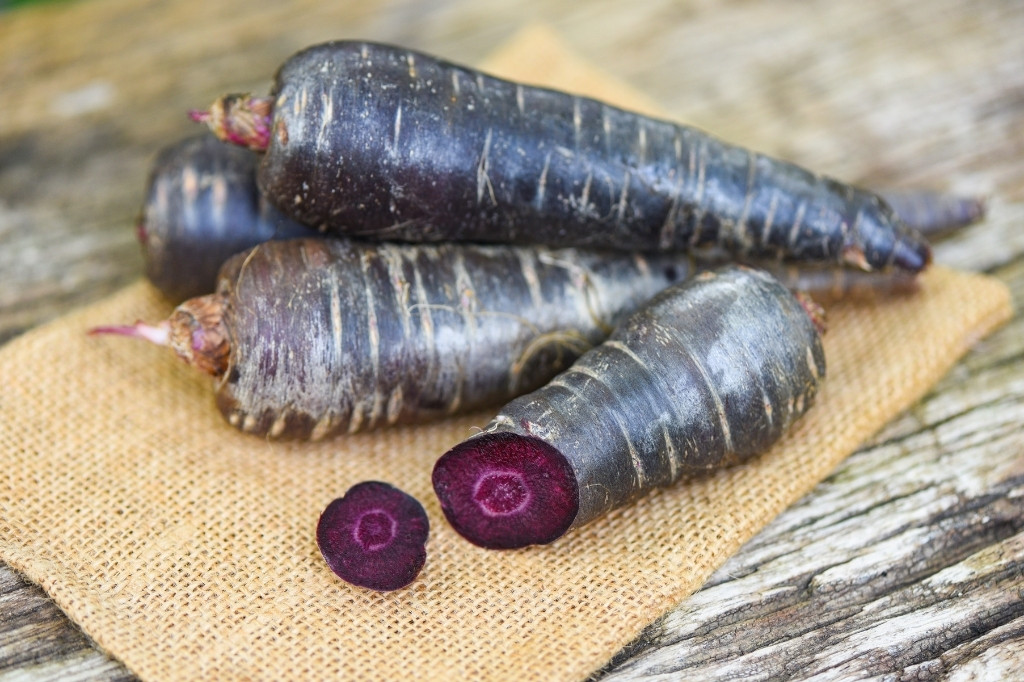
Purple Carrots: Purple carrots are nutritious and healthy because they contain anthocyanins, powerful antioxidants with numerous health benefits.
They are said to reduce inflammatory processes and improve heart health.
Onion

Onion: Also known as red onions, they have a deep purple skin and are commonly used in salads, sandwiches, and cooking.
Purple onions have a sweeter and softer flavor than yellow and white onions.
Cabbage

Cabbage: This cabbage is another interesting purple thing. Purple cabbage has more antioxidants and vitamin C than the other colors, so it is healthier.
Cauliflower

Cauliflower: Purple cauliflower is 100% natural and has this color due to a high concentration of anthocyanins, which are powerful antioxidants that are beneficial to health.
This cauliflower, which is a vibrant purple, is edible and tastes sweeter than other cauliflower varieties.
Purple Broccoli
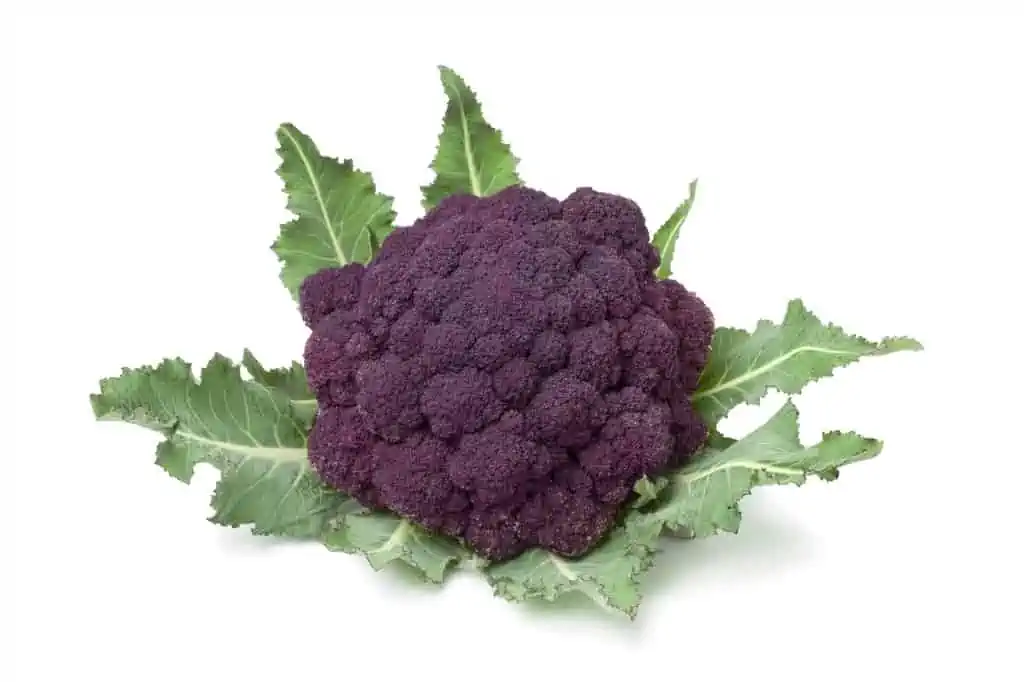
Purple Broccoli: Yes, purple broccoli is edible. Purple broccoli is a broccoli strain developed in Wellesbourne, England. Purple broccoli tastes nuttier and sweeter than regular broccoli.
It has this color because it contains a lot of anthocyanins.
Purple Garlic
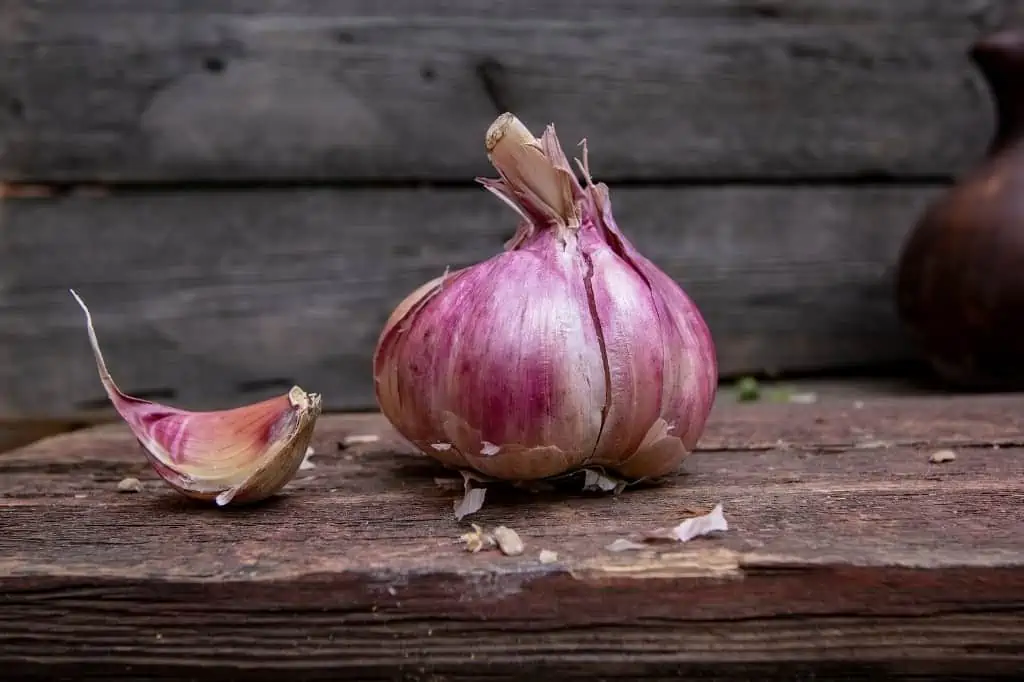
Purple Garlic: Despite having a purple tint to its papery skin, purple garlic is identical to traditional garlic. Purple garlic is edible, with a milder flavor than traditional garlic. It’s also more juicy.
Plums
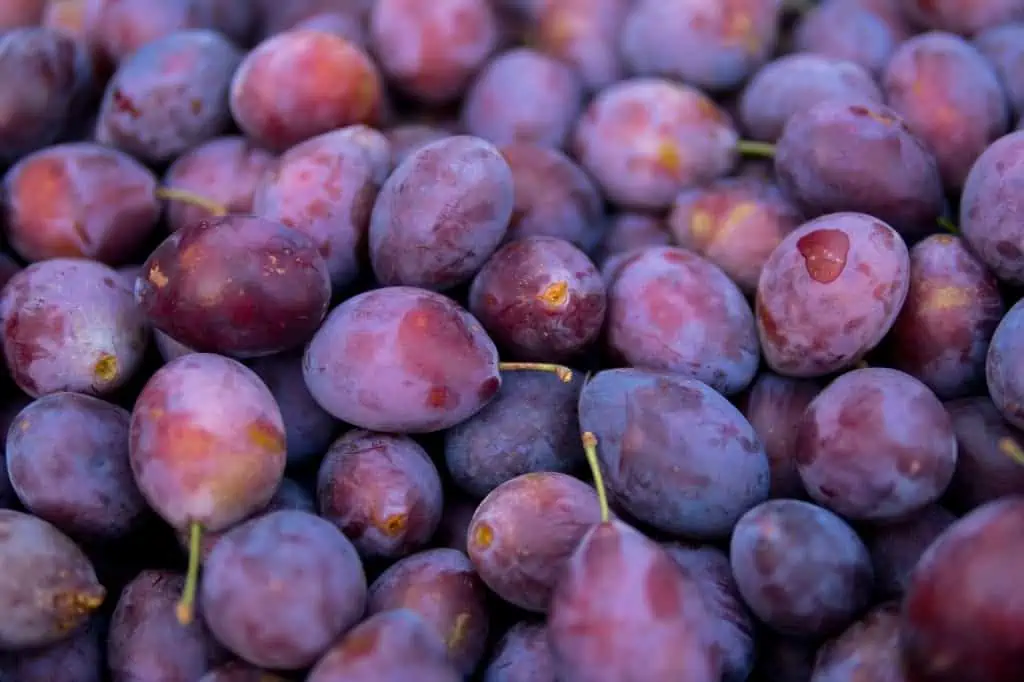
Plums: With their purple skin, plums are loaded with vitamins and minerals, including potassium and calcium. They are high in polyphenols and may lower the risk of heart disease.
Purple Bell Pepper
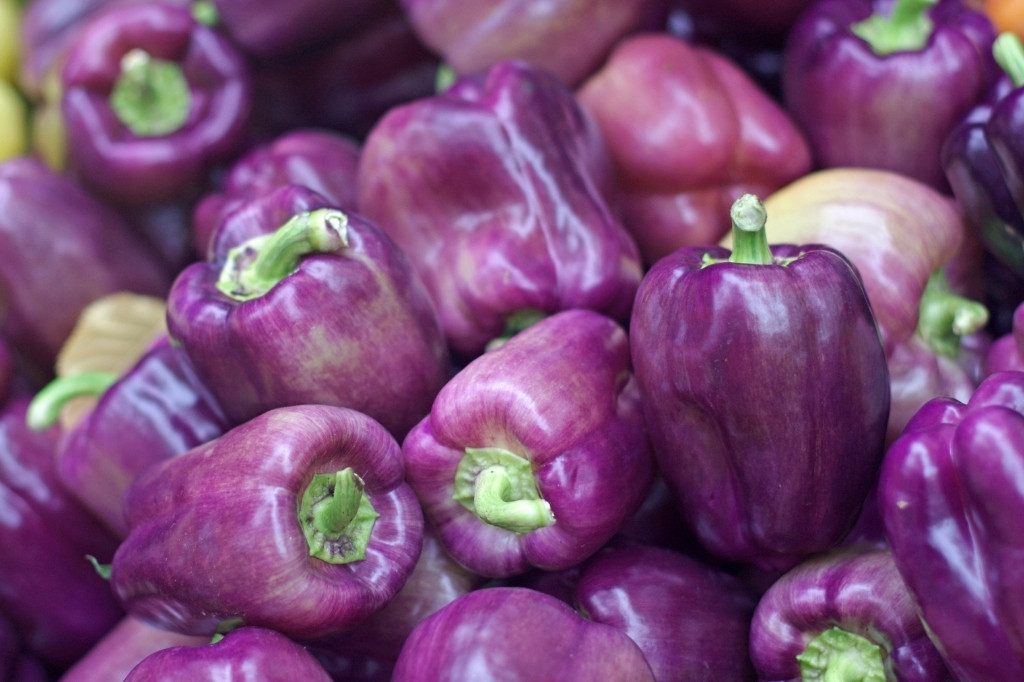
Purple Bell Pepper: Purple Bell pepper gets its purple color from its high anthocyanin content. It has a more bitter taste than the classics and is very healthy for a balanced diet.
Purple Sweet Potato
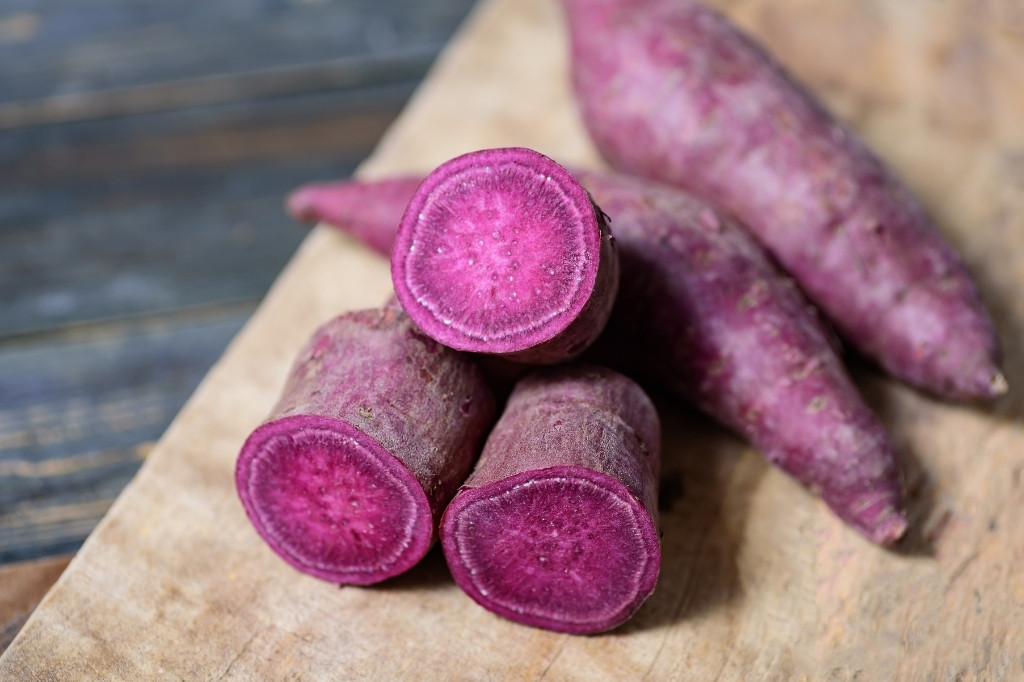
Purple Sweet Potato: Sweeter than the regular variety, the purple sweet potato has a purple flesh because it is high in the antioxidant anthocyanin, like most other purple fruits and vegetables.
Red Sweet Potato
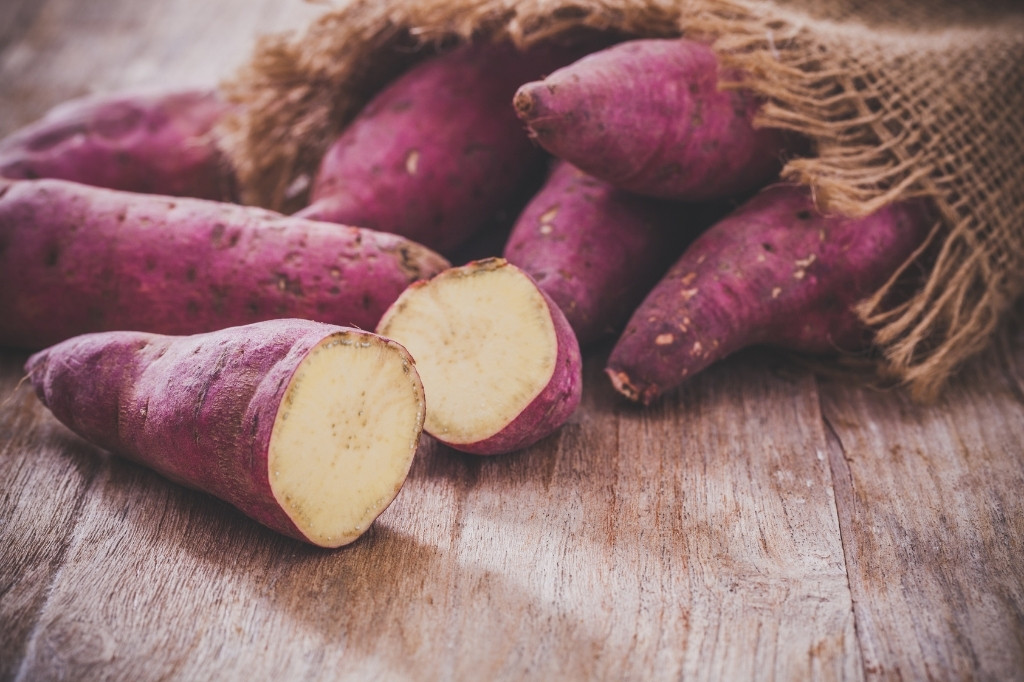
Red Sweet Potato: Unlike the purple sweet potato, this potato only has purple skin; the inside is the same as the other types.
Beetroot
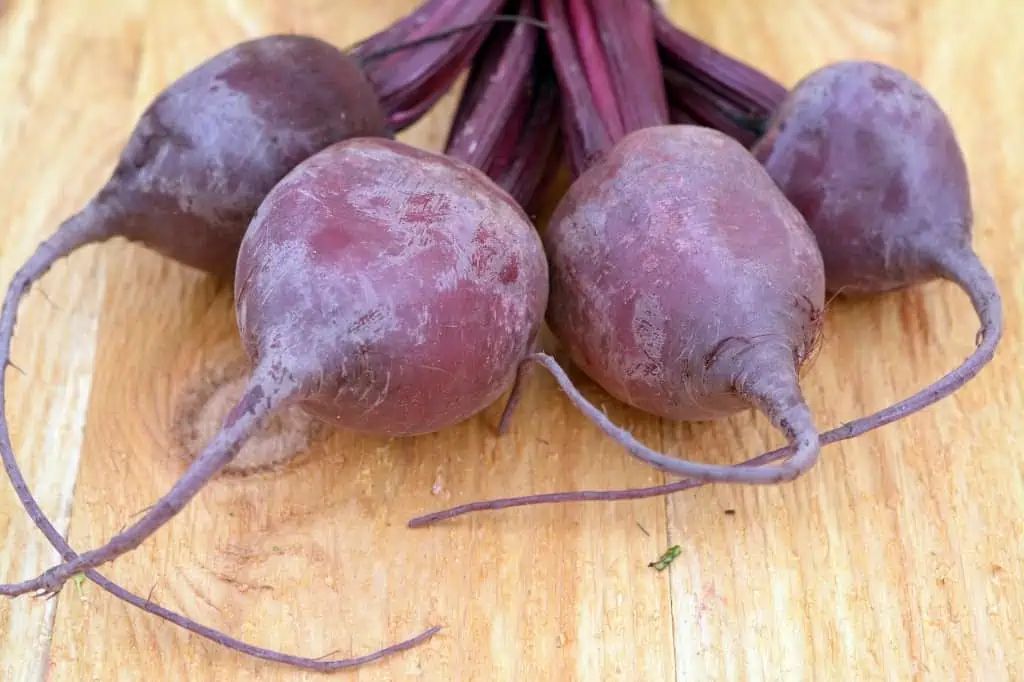
Beetroot: Beetroot is a purple vegetable that is high in betalains. Beets are high in folate and a good source of vitamin C, magnesium, potassium, iron, and fiber.
They also have a low-calorie count. As a result, beets are among the most antioxidant-rich purple vegetables. So don’t avoid things that are naturally purple because they can be among the healthiest.
Purple Corn
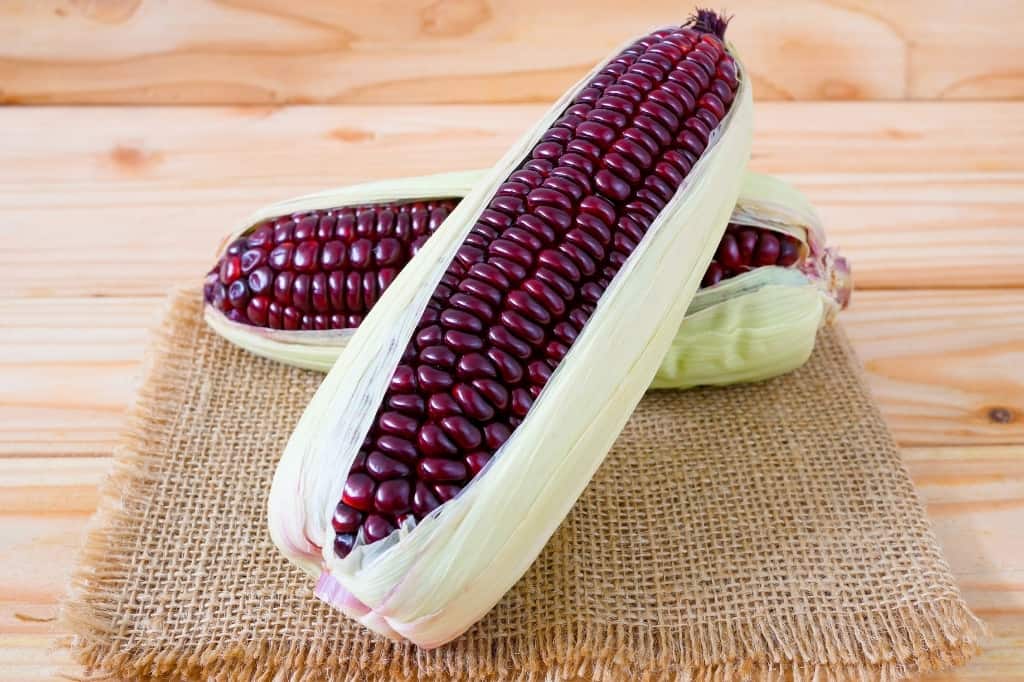
Purple Corn: A deep purple maize variety with more protein, fiber, and antioxidants than yellow corn, purple corn is one of the unique purple things.
Furthermore, one study found that it contains a natural chemical that may help fight inflammation and obesity.
Red Grapes
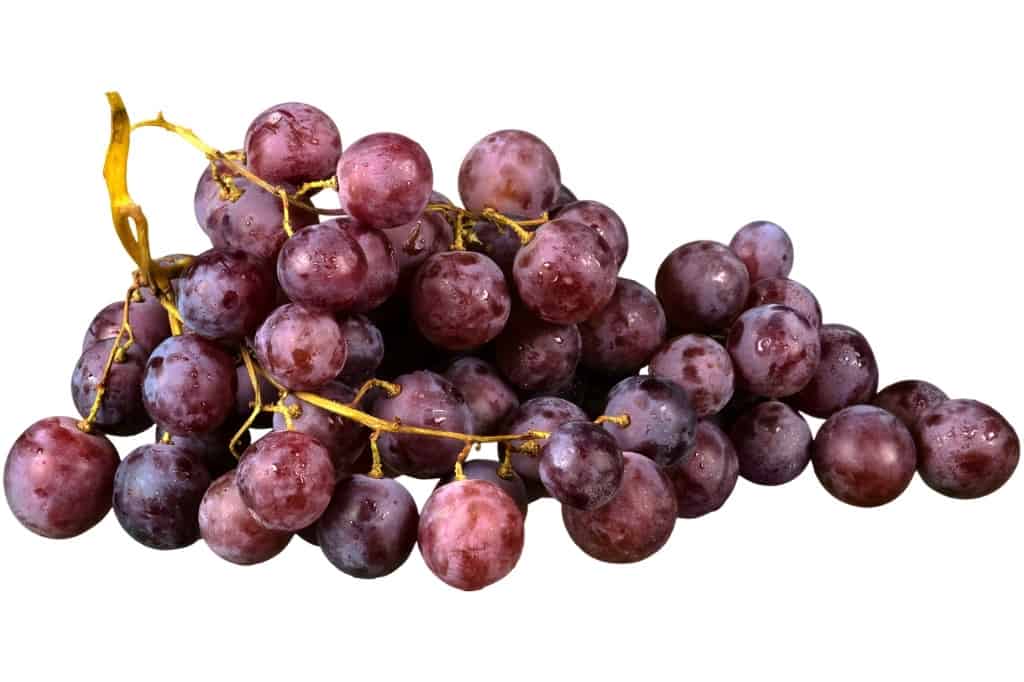
Red Grapes: Due to their high content of flavonoids or polyphenols, red grapes are the healthiest grapes for the cardiovascular system. That’s why they’re purple.
Fig

Fig: Fresh or dried, figs are edible fruits of the Ficus carica species high in calcium and potassium.
Blueberries
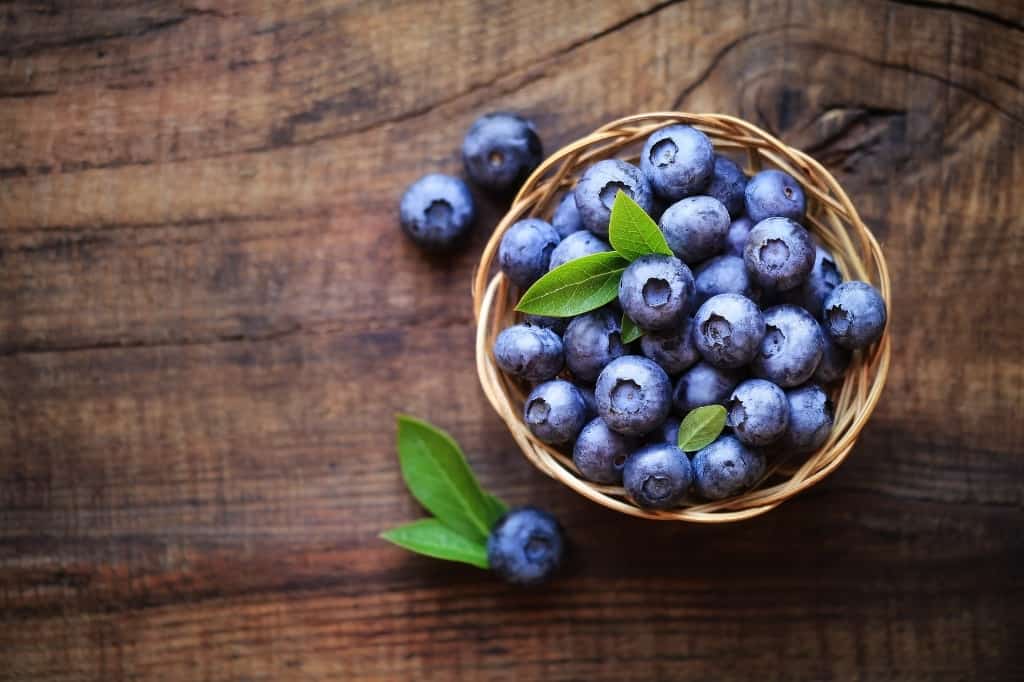
Blueberries: Blueberries have the highest antioxidant capacity of any fruit. This purple fruit is regarded as a superfood. It’s one of the healthiest purple things.
Purple Daikon Radish
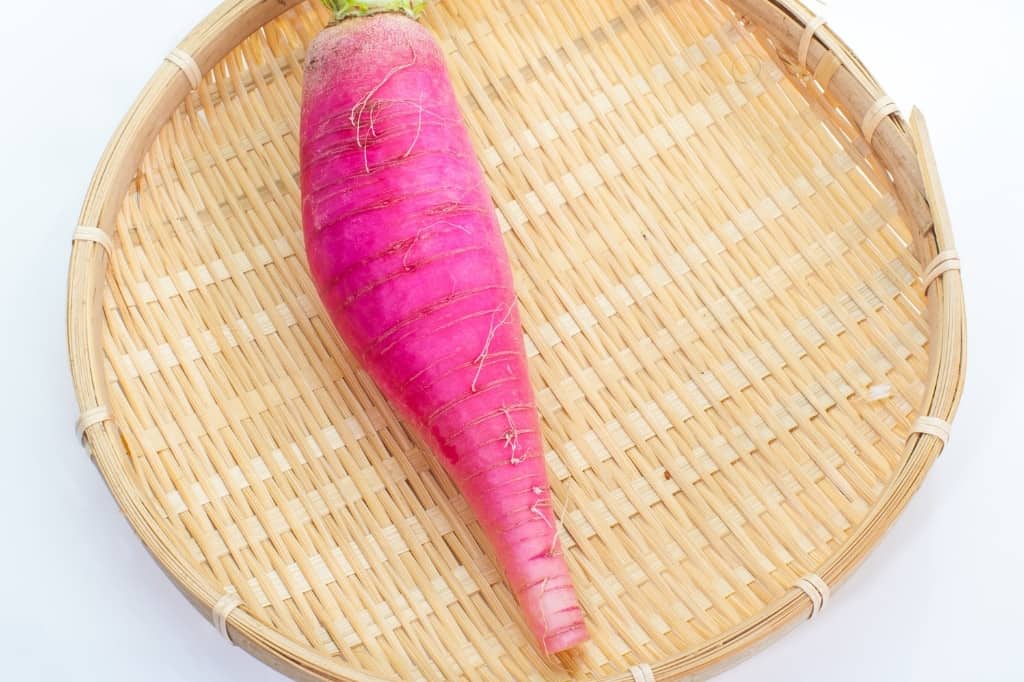
Purple Daikon Radish: Purple Daikon radishes have a peppery flavor and a crunchy texture, and they are high in fiber and vitamin C. They are a pale purple color.
Acai Berry
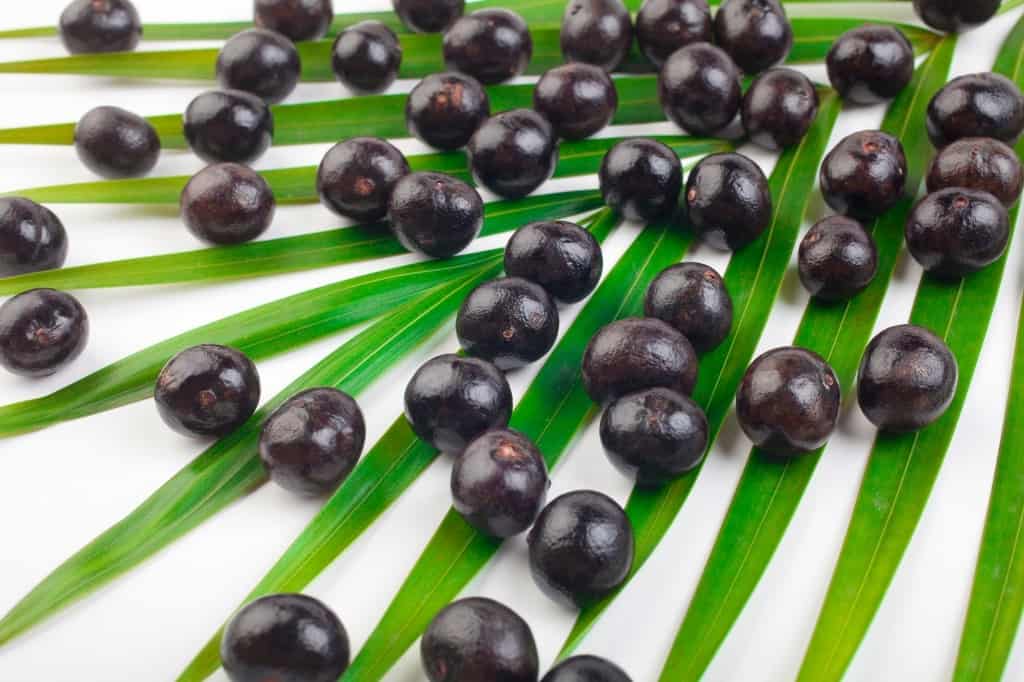
Acai Berry: A grape-like fruit native to South America, acai berries are a round fruit that grows in the acai palm tree.
Jambul
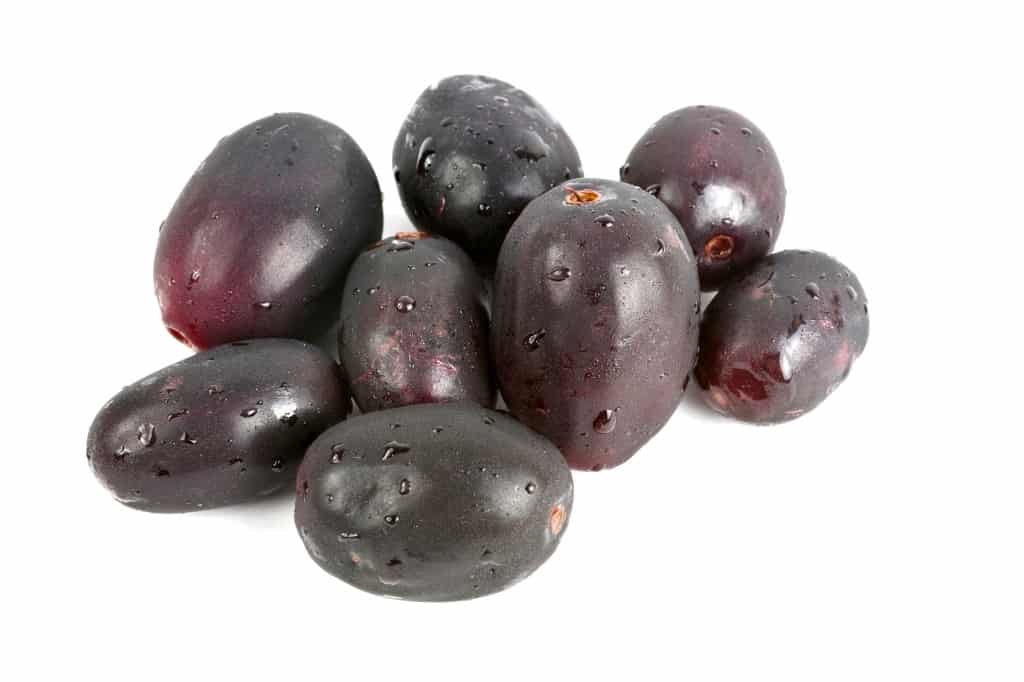
Jambul: Jambul berries are high in vitamin C and have a sweet, slightly acidic flavor and a reddish-purple color. They are indigenous to Australia and southern Asia.
Eggplant
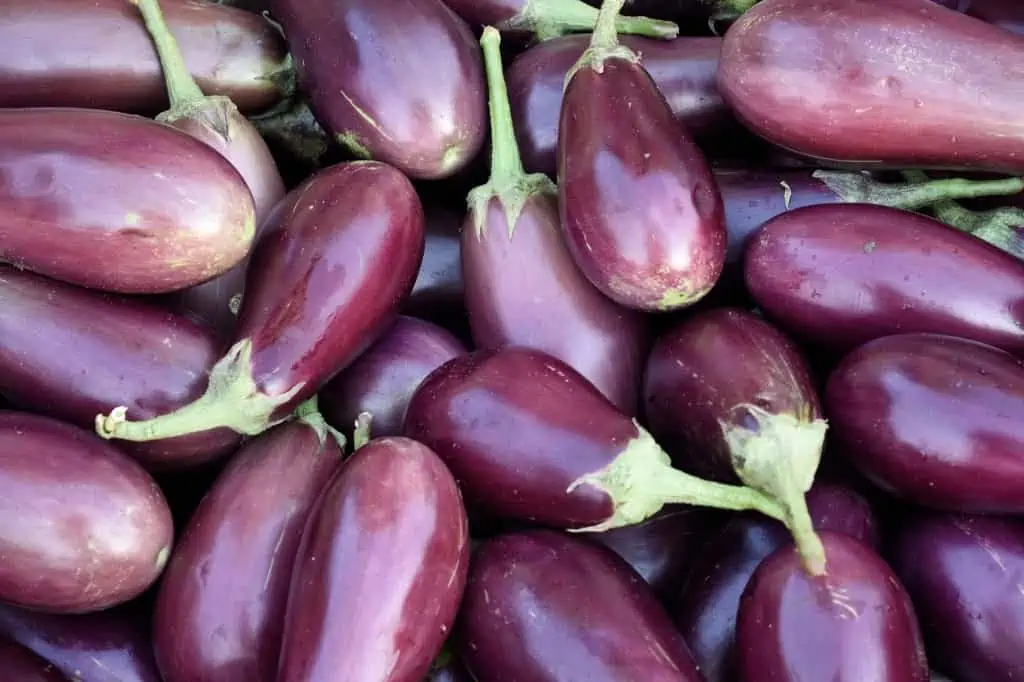
Eggplant: Originally from South India and Sri Lanka, eggplant is used in various culinary dishes. Eggplant is a dark purple or brownish-purple vegetable high in vitamins B1, B6, manganese, and copper.
The eggplant salad with onions is delicious!
Elderberry
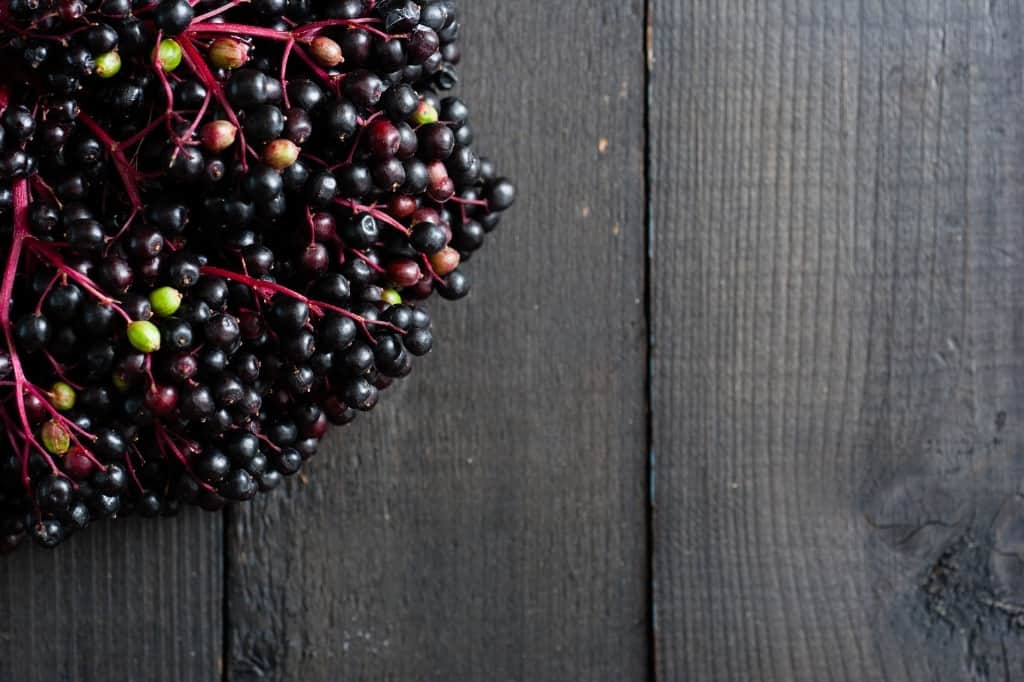
Elderberry: A dark purple fruit, the berries of elderberry are high in vitamins (particularly vitamin C) and can help the body eliminate oxidative stress.
Purple Passionfruit
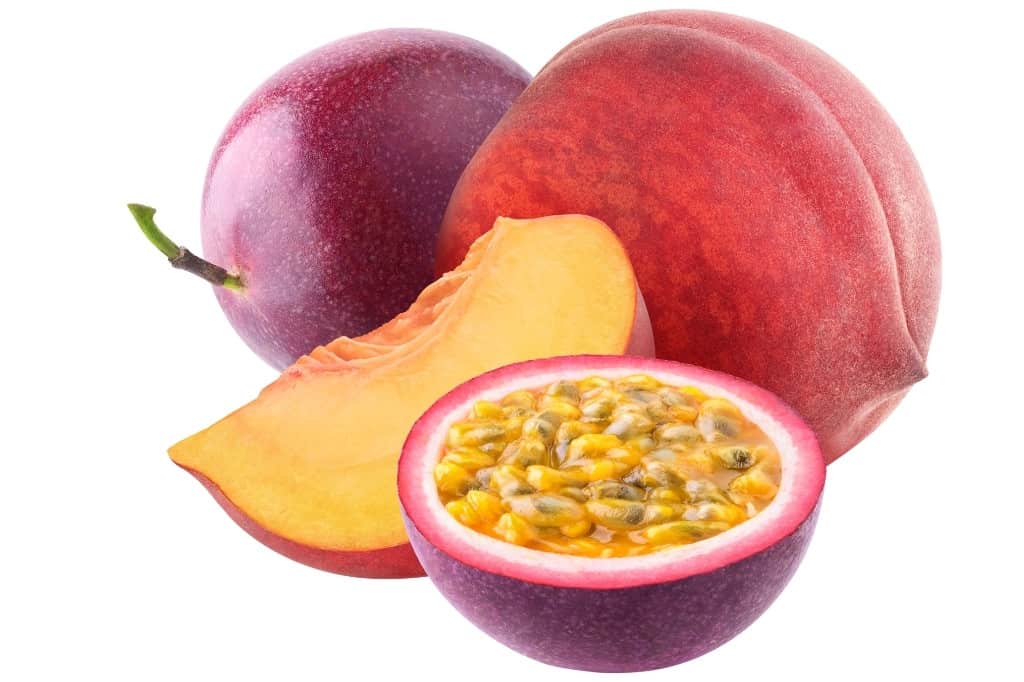
Purple Passionfruit: Purple passionfruit is an evergreen climbing vine grown for its delicious seedy pulp.
Purple Animals
Gouldian Finch’s Chest
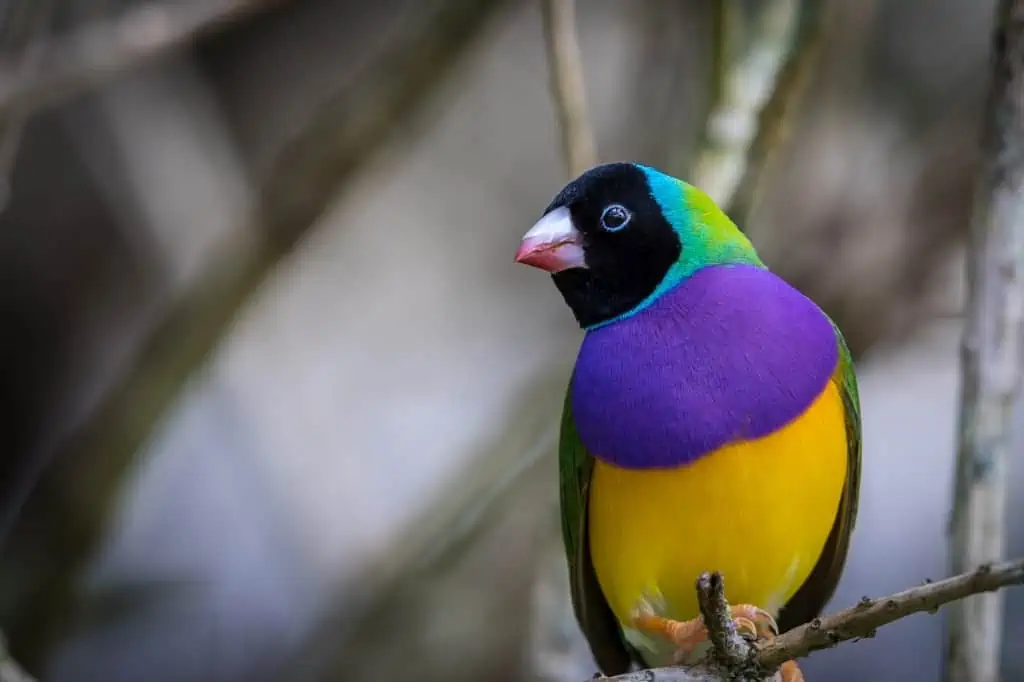
The Gouldian Finch’s Chest: A popular colorful bird, the Gouldian finch is an endangered species. The male has a purple chest and bright colors, while the female has lighter color shades. It is native to northern Australia and is thought to number 2,500 individuals worldwide.
Purple Gallinule
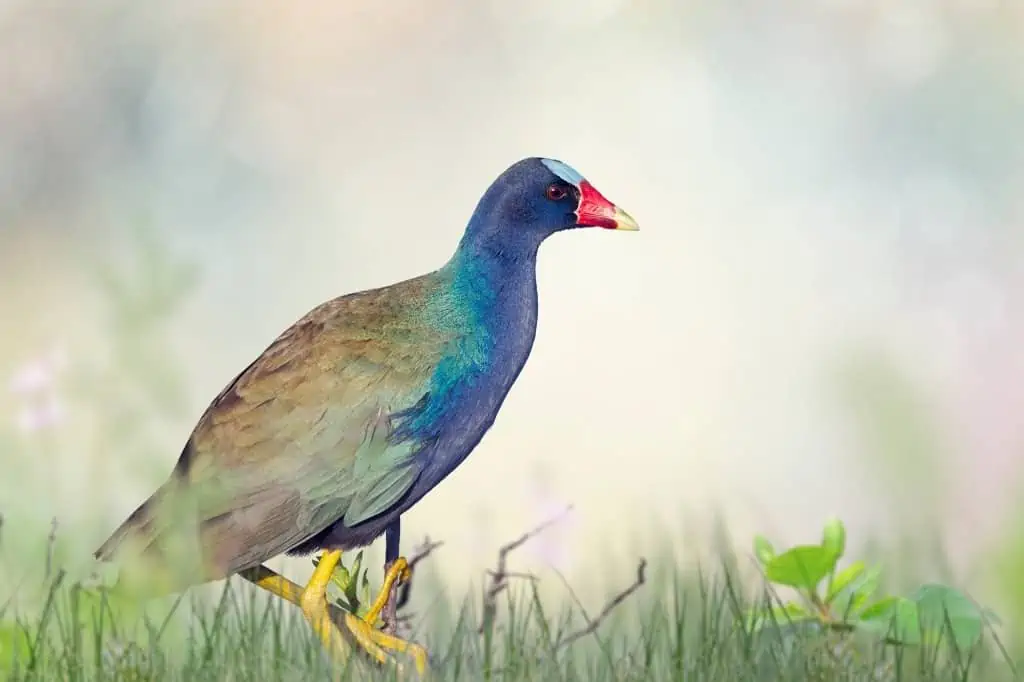
Purple Gallinule: The purple gallinule is Florida’s most beautiful waterbird. It is a medium-sized marsh bird. The purple coloring on its head and body has made it well-known. It is also known as the purple moorhen or Porphyrio martinicus.
Mandarin Duck
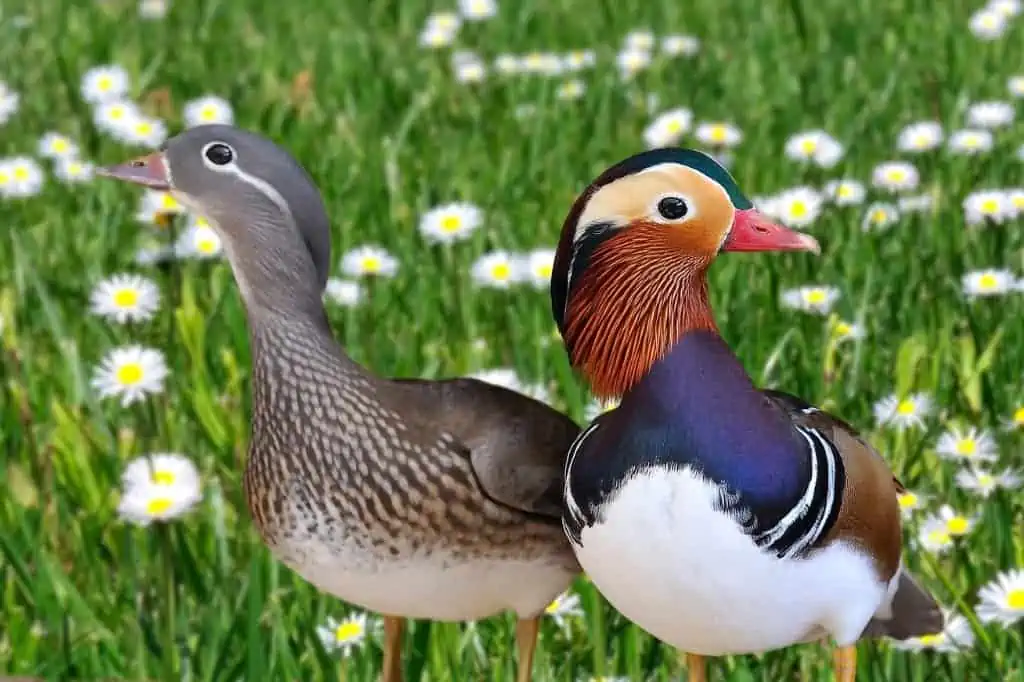
Mandarin Duck: These brightly colored ducks are both adorable and spectacular. The males are purple on the neck and pale orange, white, brown, and dark green on the rest of the body, while the females are gray.
Varied Bunting
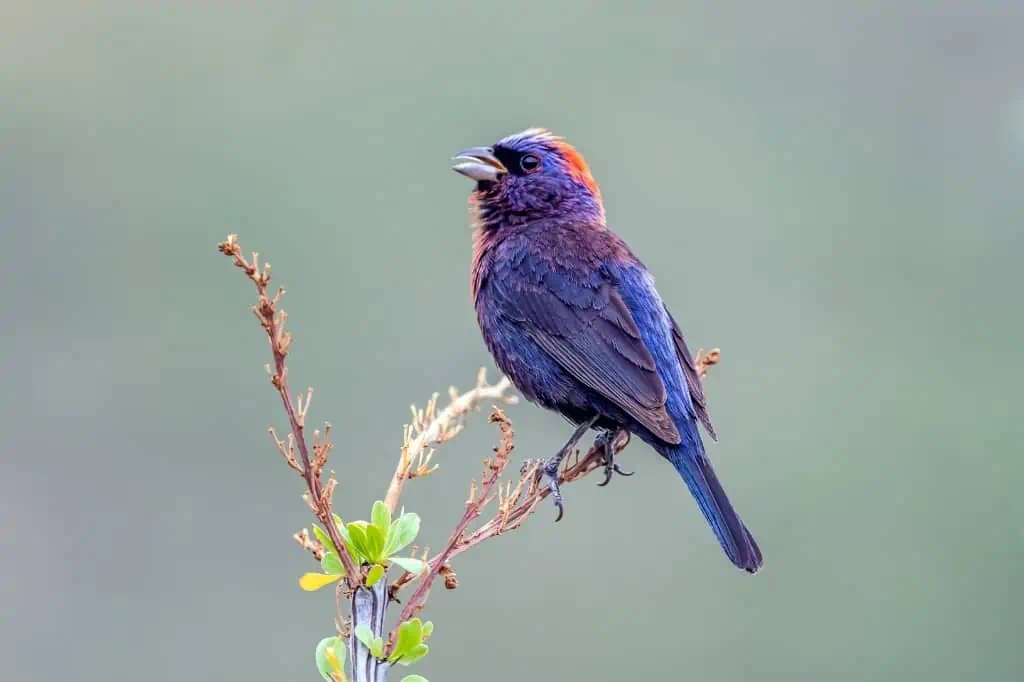
Varied Bunting: This is a delicate songbird. Males have a purple and red coloration.
Violet Sabrewing Hummingbird
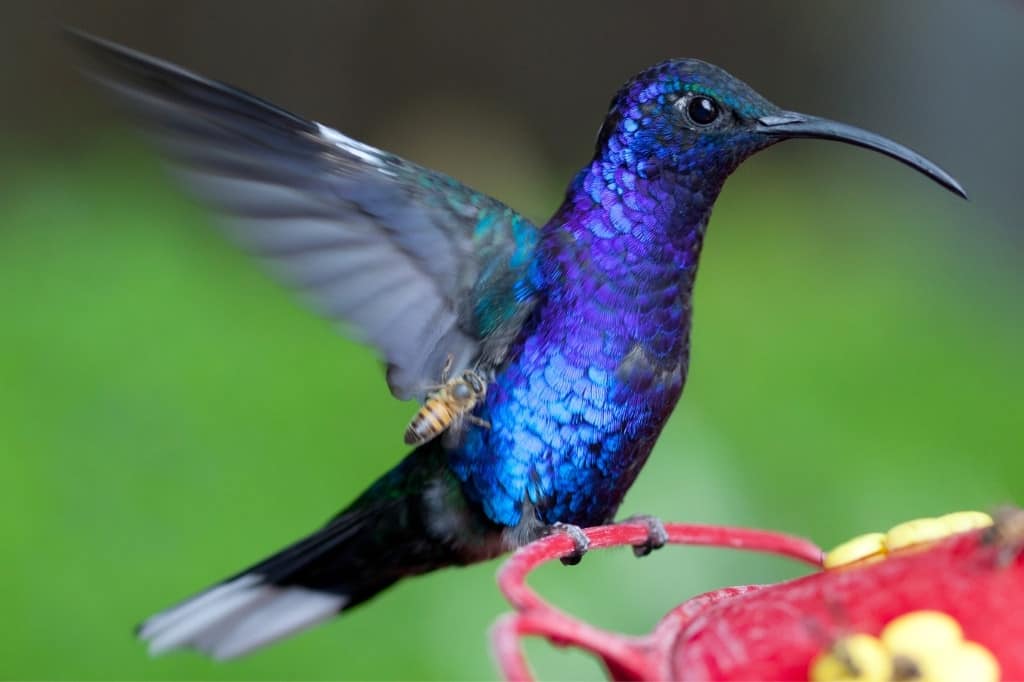
Violet Sabrewing Hummingbird: One of the world’s largest hummingbirds, the violet sabrewing is a spectacular species of hummingbird. It has purple and violet tones with a black or dark green back.
Purple Red-Eyed Tree Frog
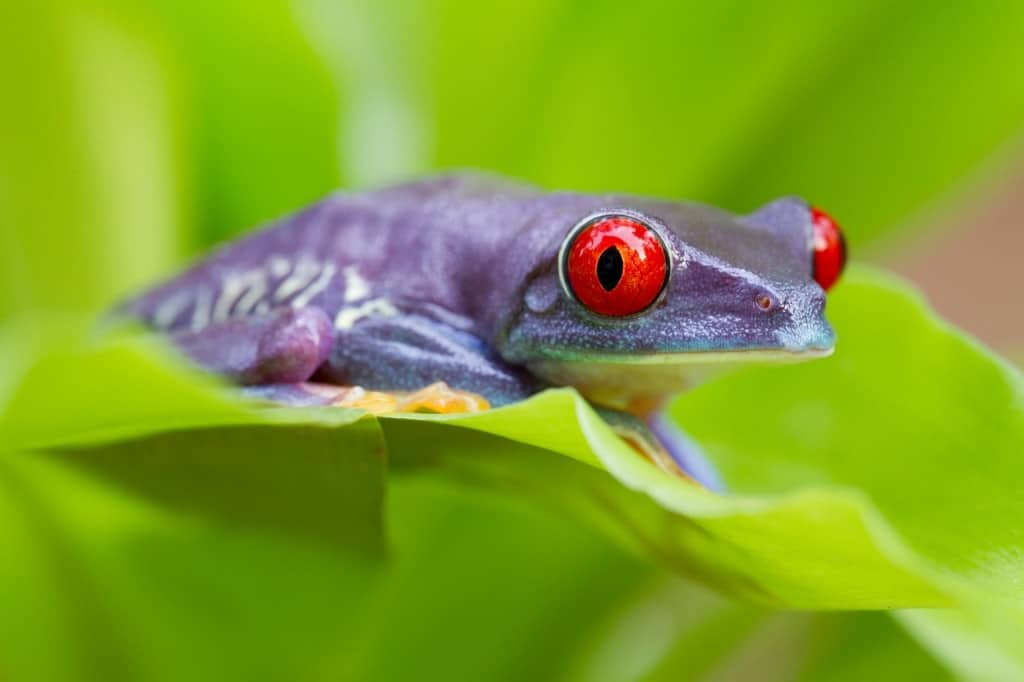
Purple Red-Eyed Tree Frog: Similar to the red-eyed tree frog, but with a dark purple body.
Siamese Betta Fish
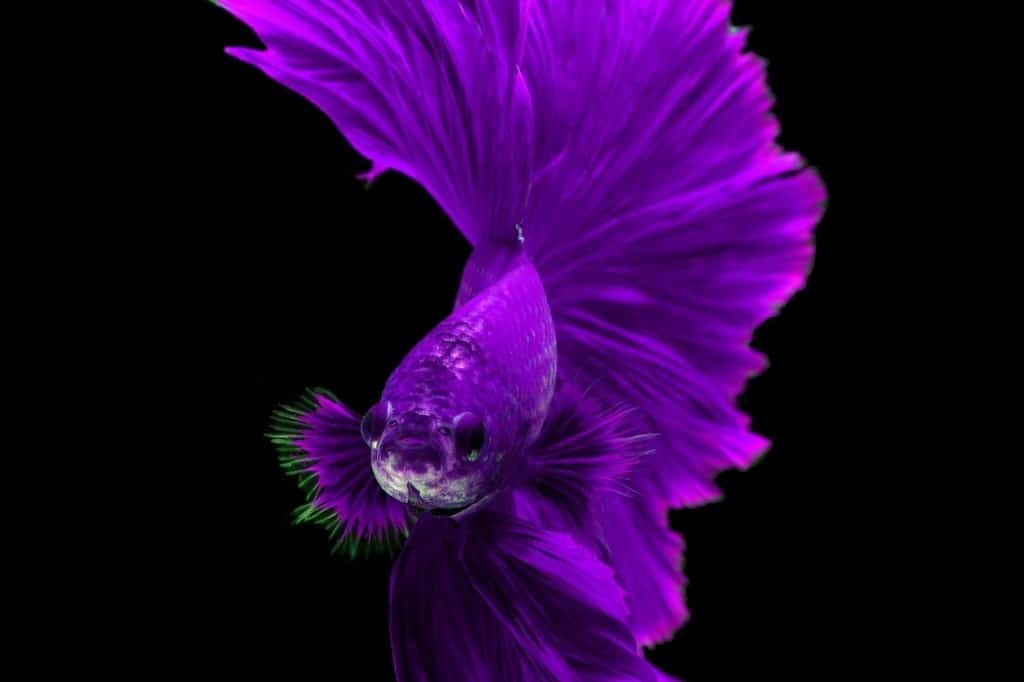
Siamese Betta Fish: Also known as the betta, the siamese betta fish is a freshwater fish that is indigenous to Southeast Asia. It is a popular fish breed that comes in purple and other bright colors.
Purple Yellow Fish
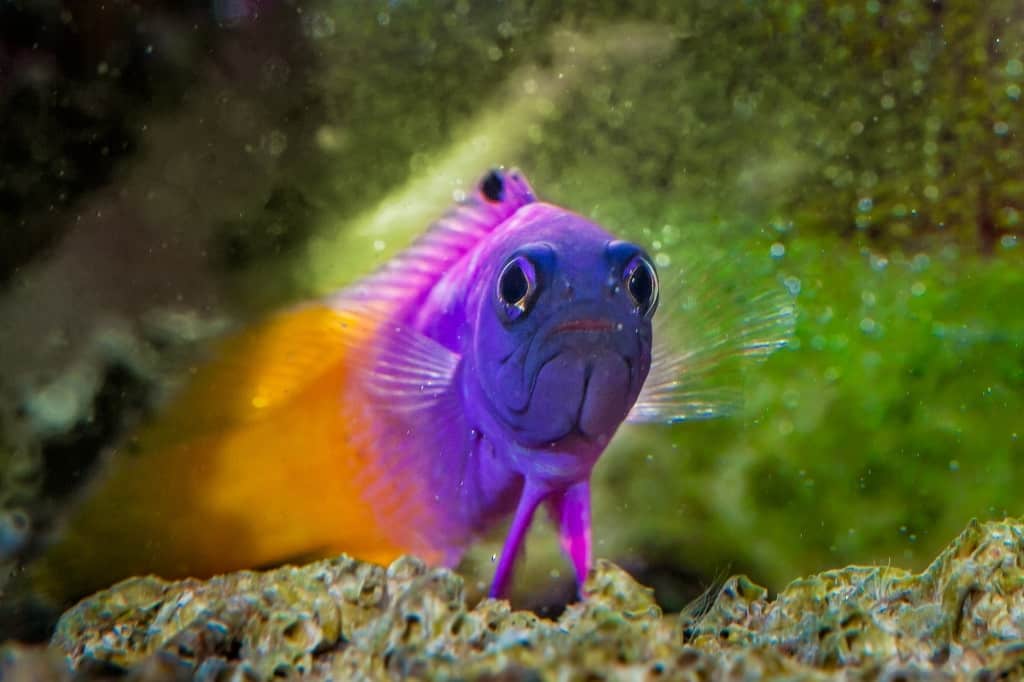
Purple Yellow Fish: Also known as Royal Gramma, the purple and yellow fish is made up of the two colors mentioned in its name. As a result, it has a yellow tail and a purple body. It’s one of the most stunning purple things we’ve ever seen.
Purple Tang Fish
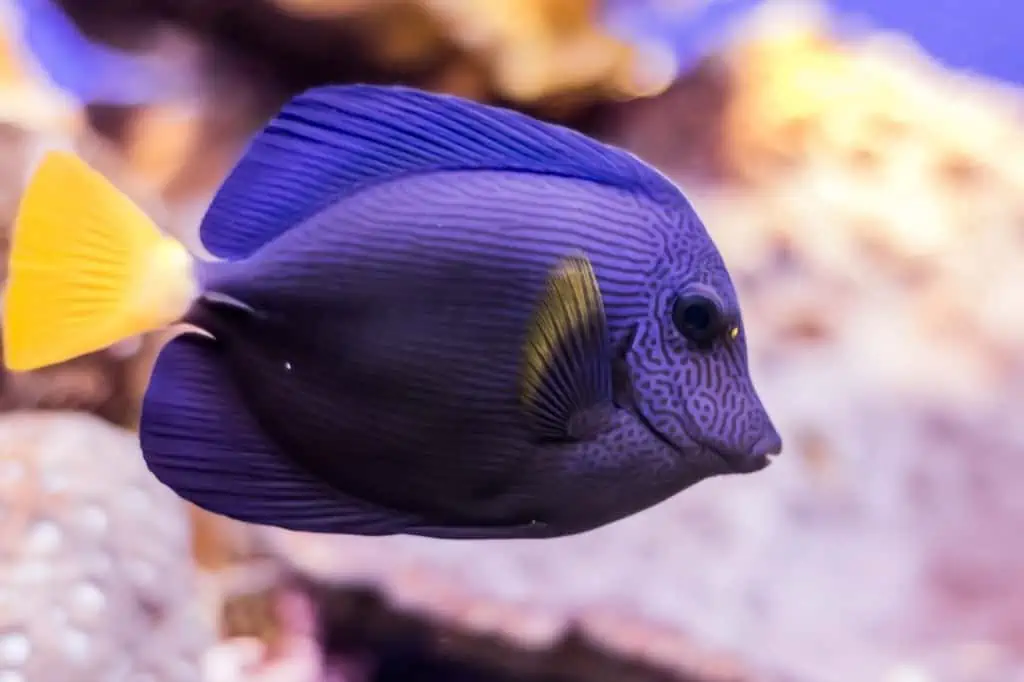
Purple Tang Fish: A yellowtail fish with a purple and violet body, the purple tang fish is one of the most beautiful members of the surgeonfish family.
Purple Coral
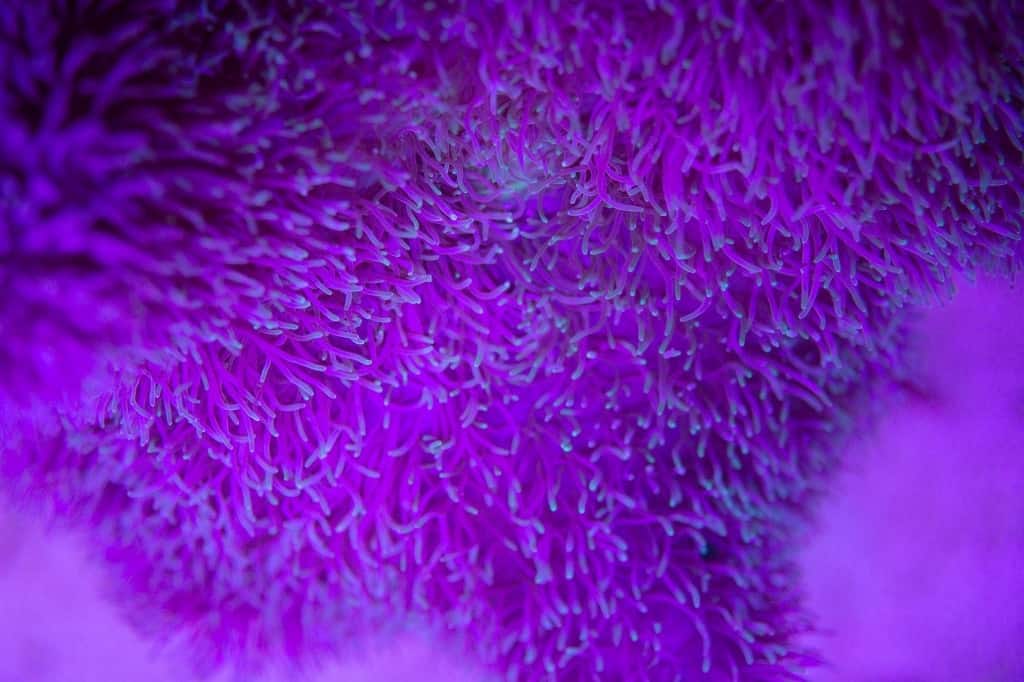
Purple Coral: Acropora Coral, or Purple Coral, is a species of coral. This purple coral is a hard coral that grows in colonies and has shades ranging from deep purple to violet.
Things That Are Purple in Nature
Purple, the color of mystery and magic, is one of nature’s rarest colors.
Things that are purple are rich in a natural pigment. We should enjoy it by eating purple foods that are high in antioxidants. These are known as anthocyanins.
So, we hope you found this list of purple things in nature useful.

